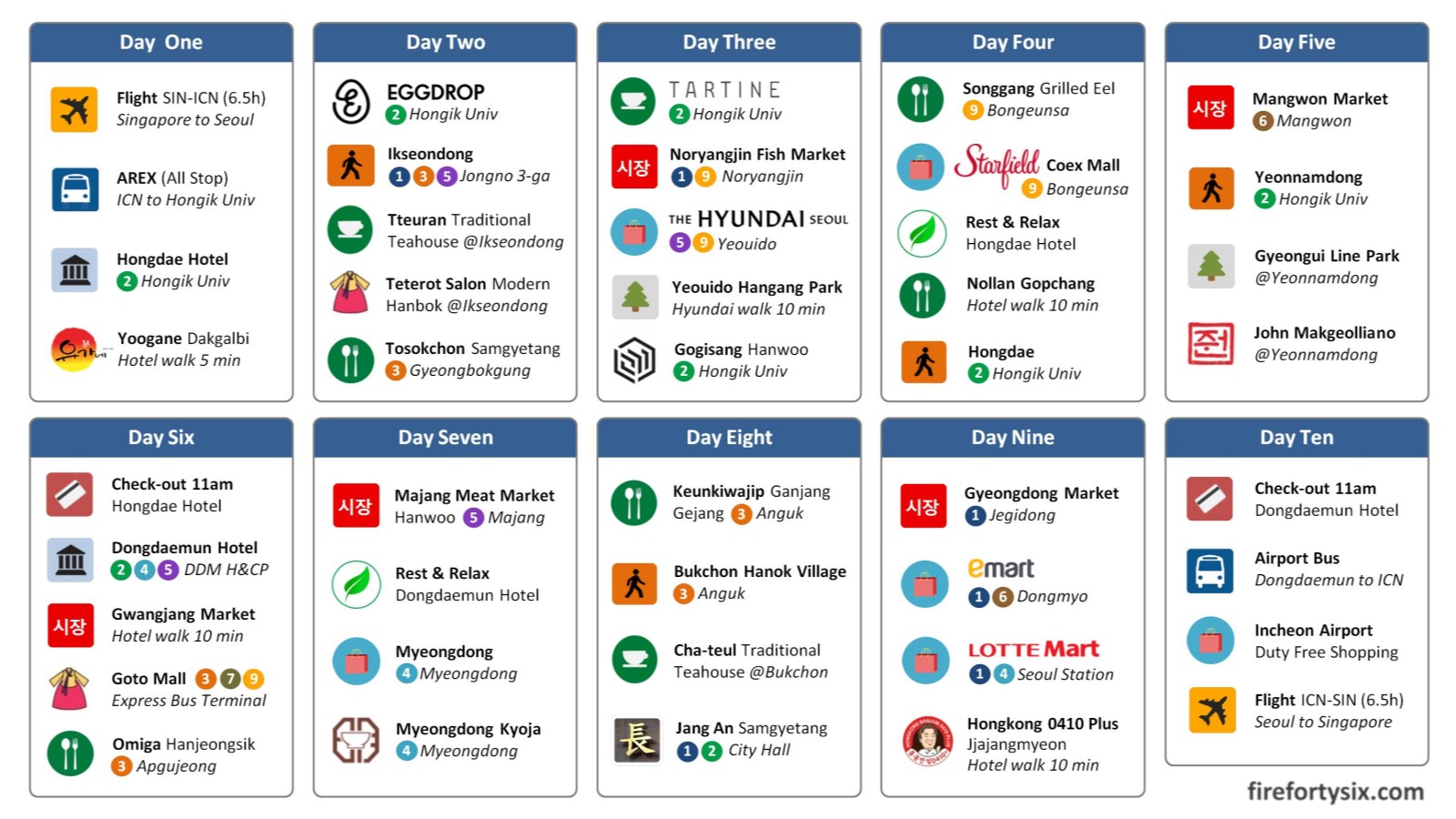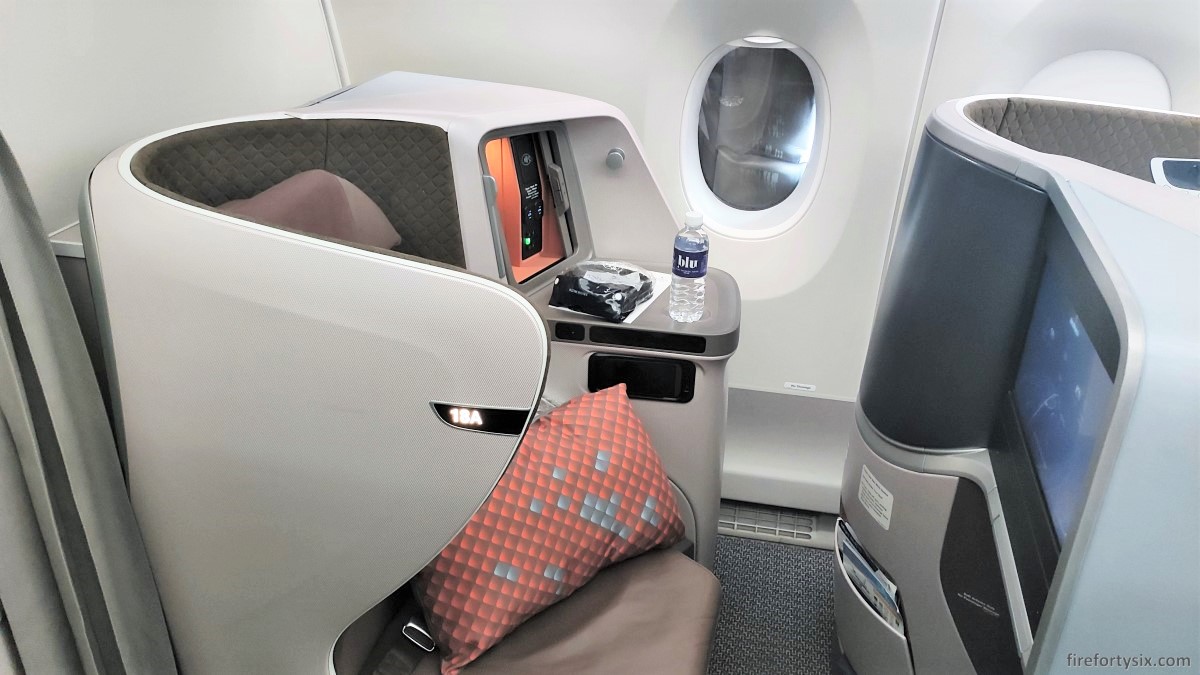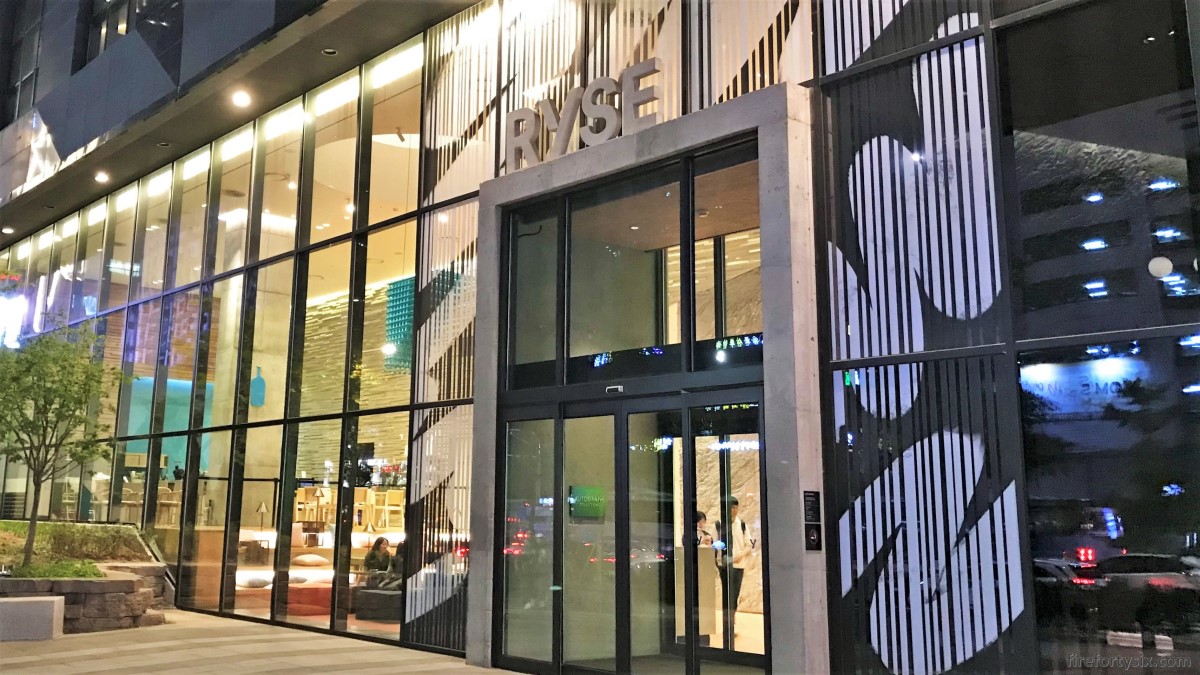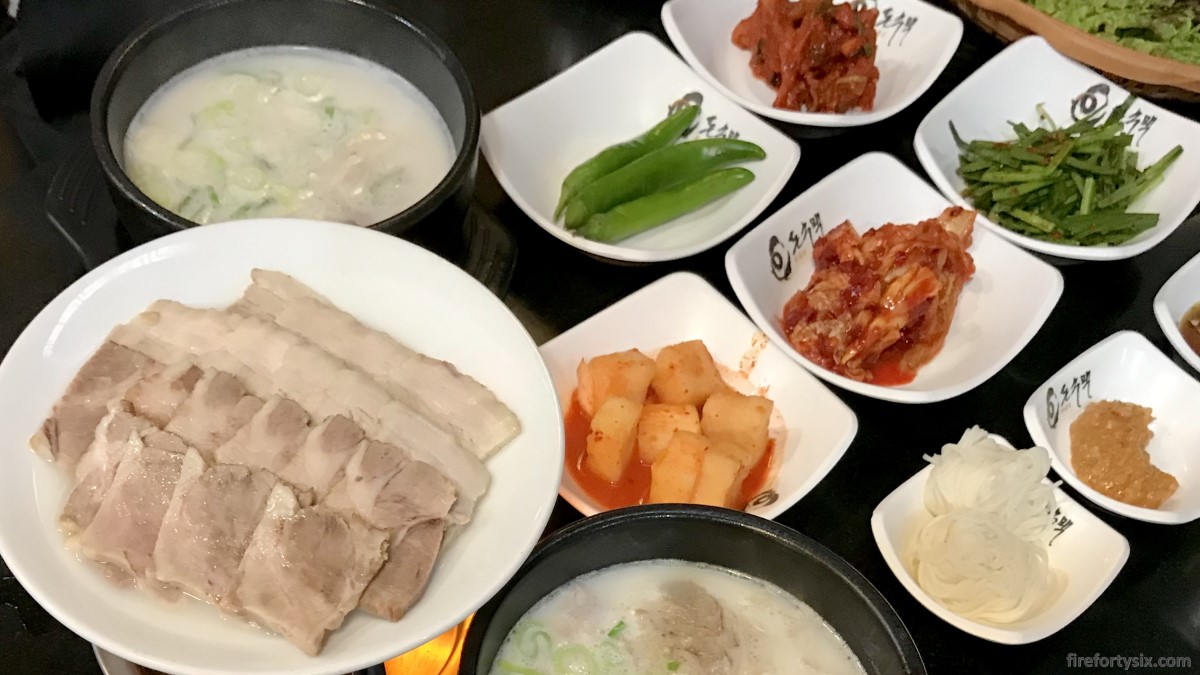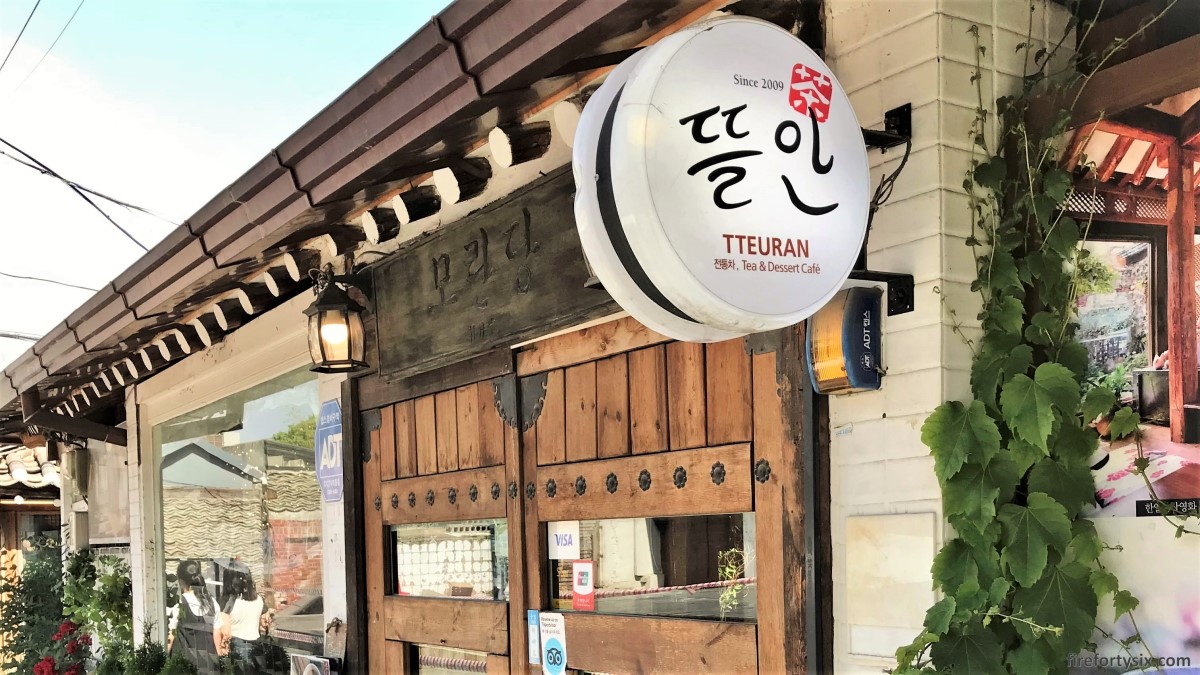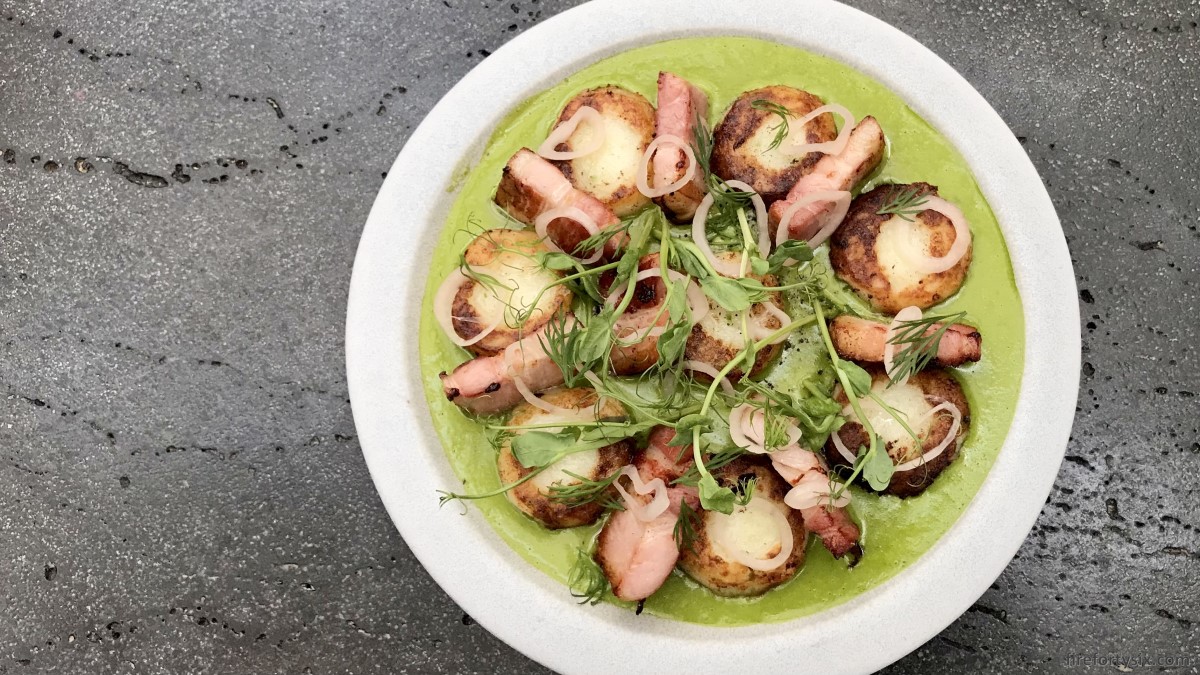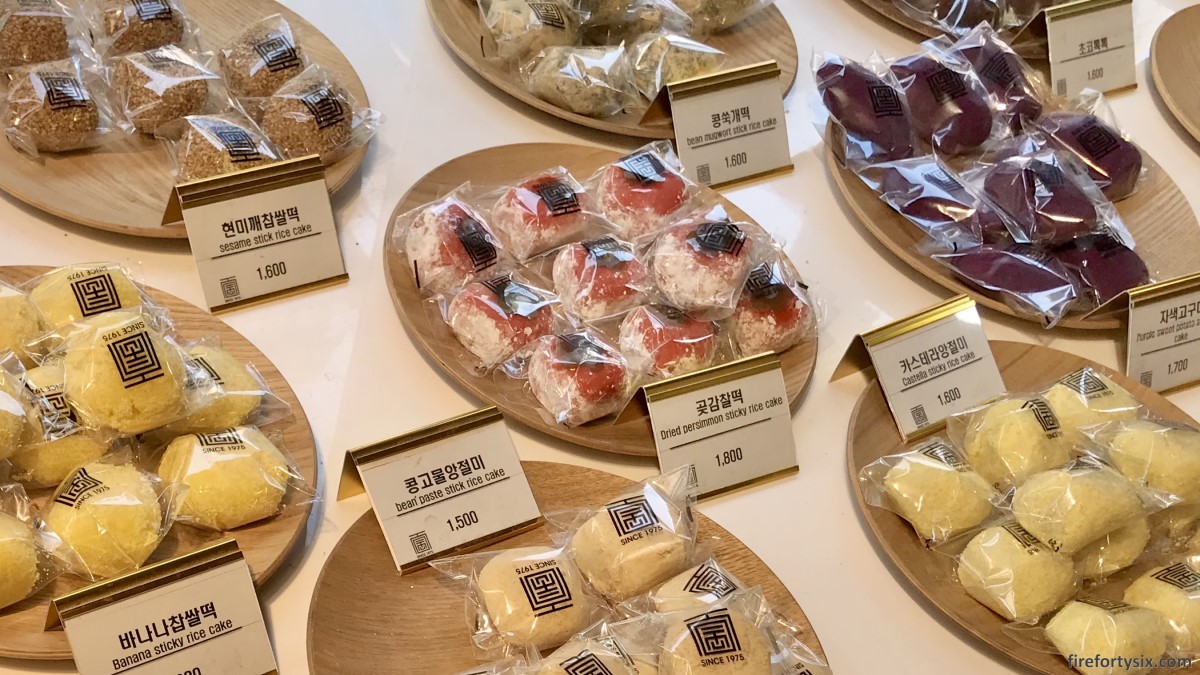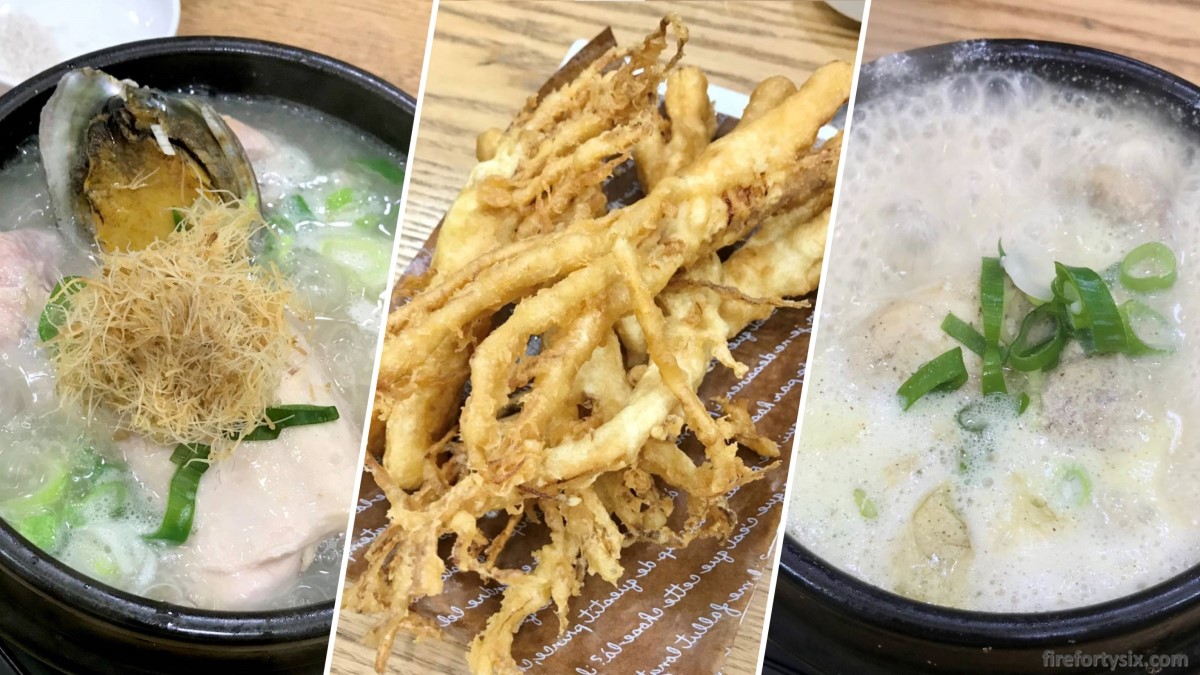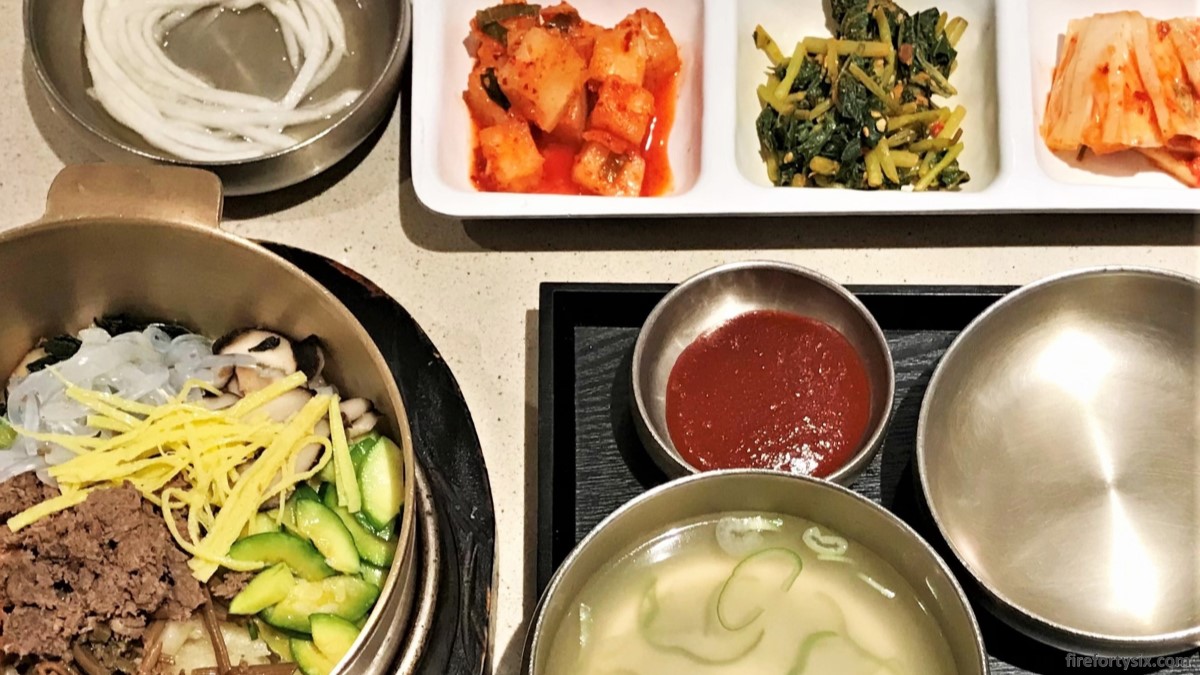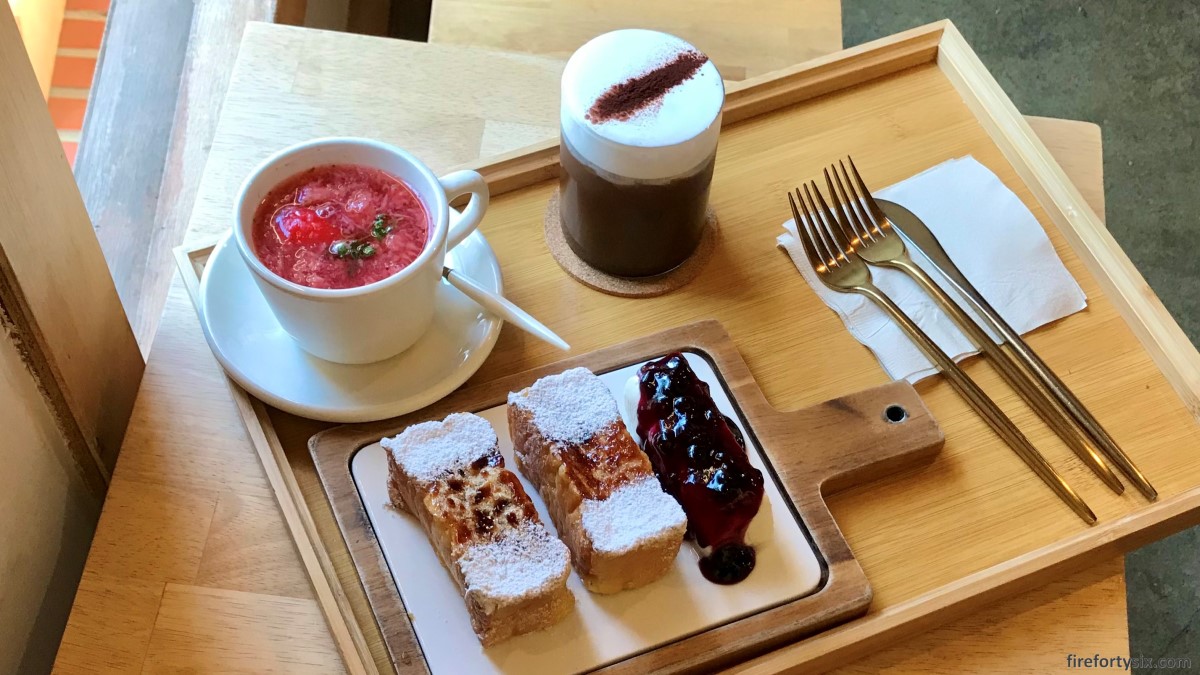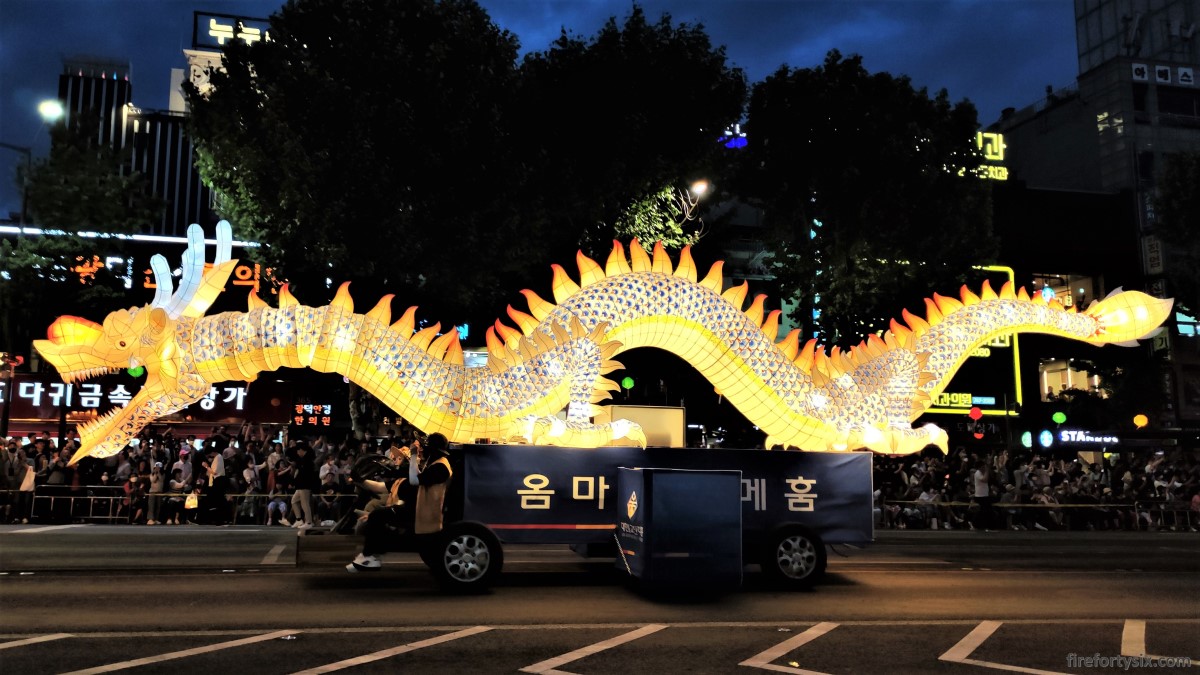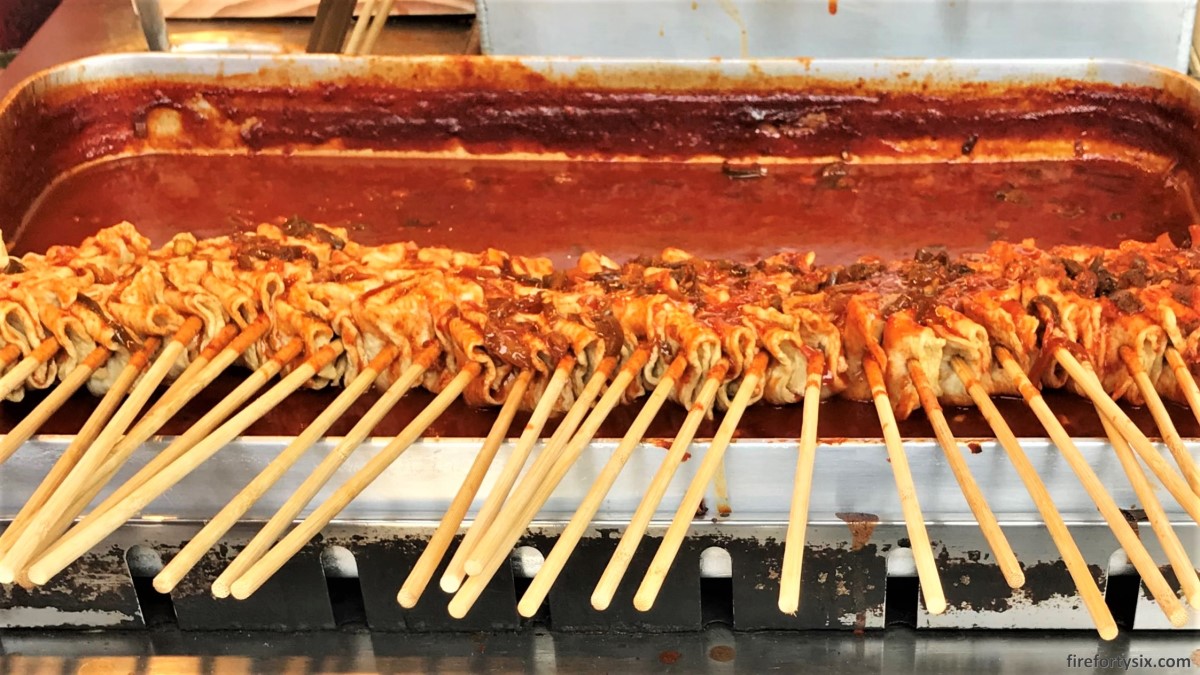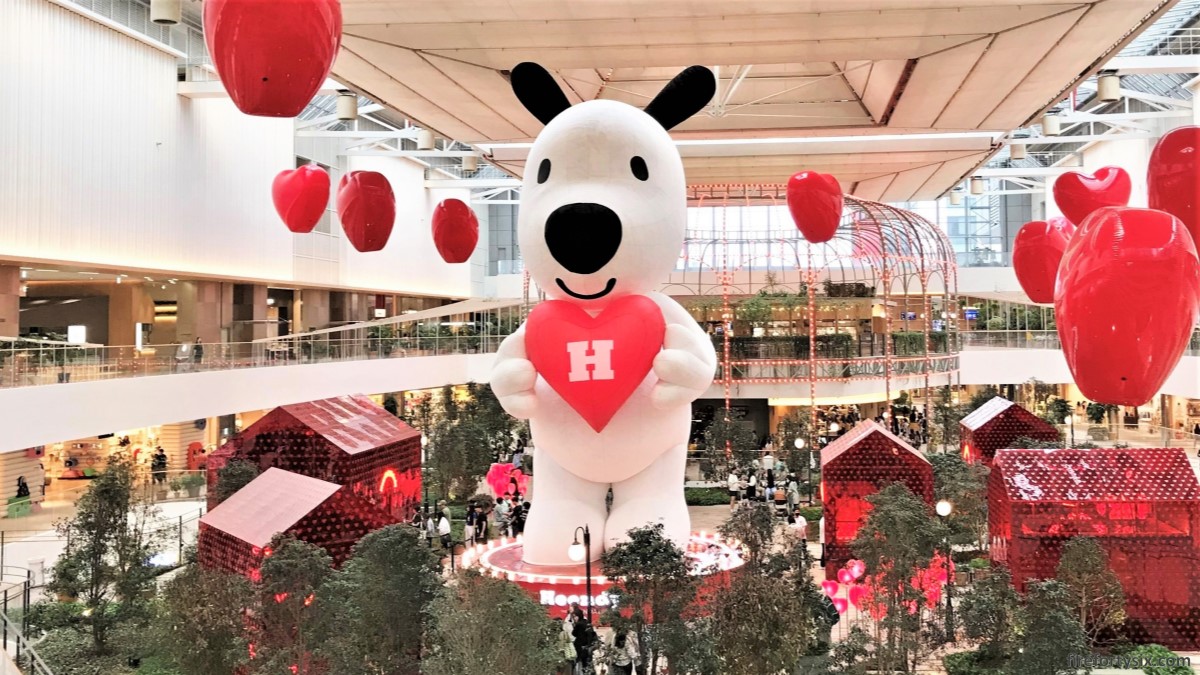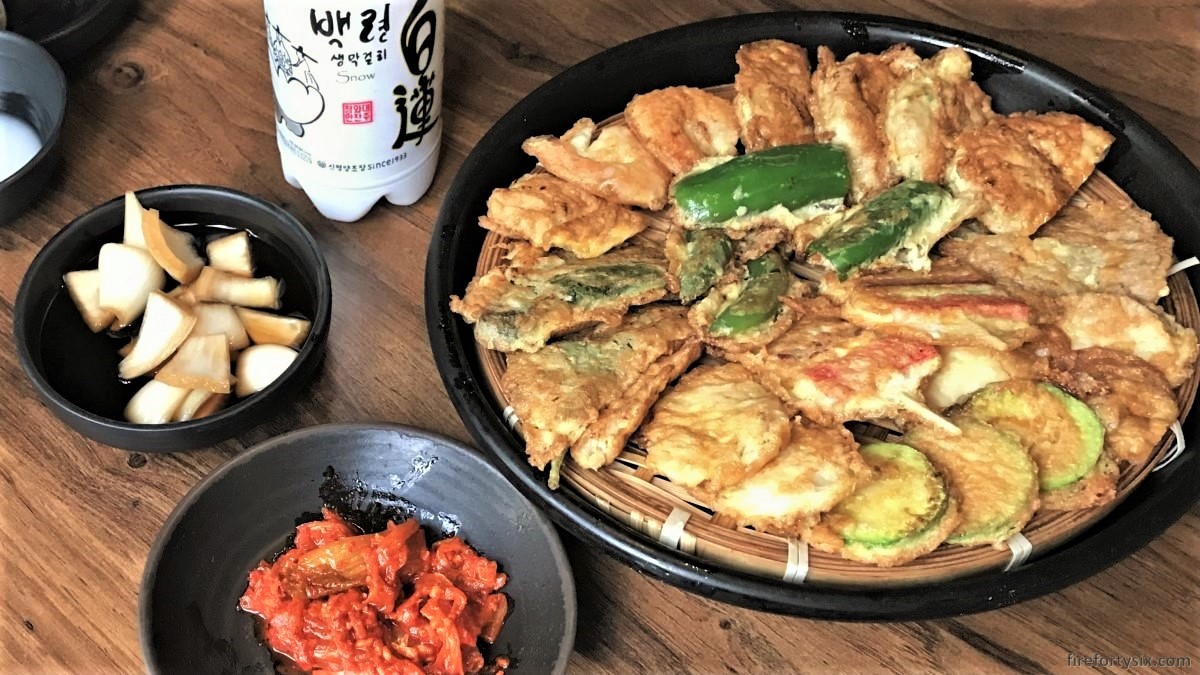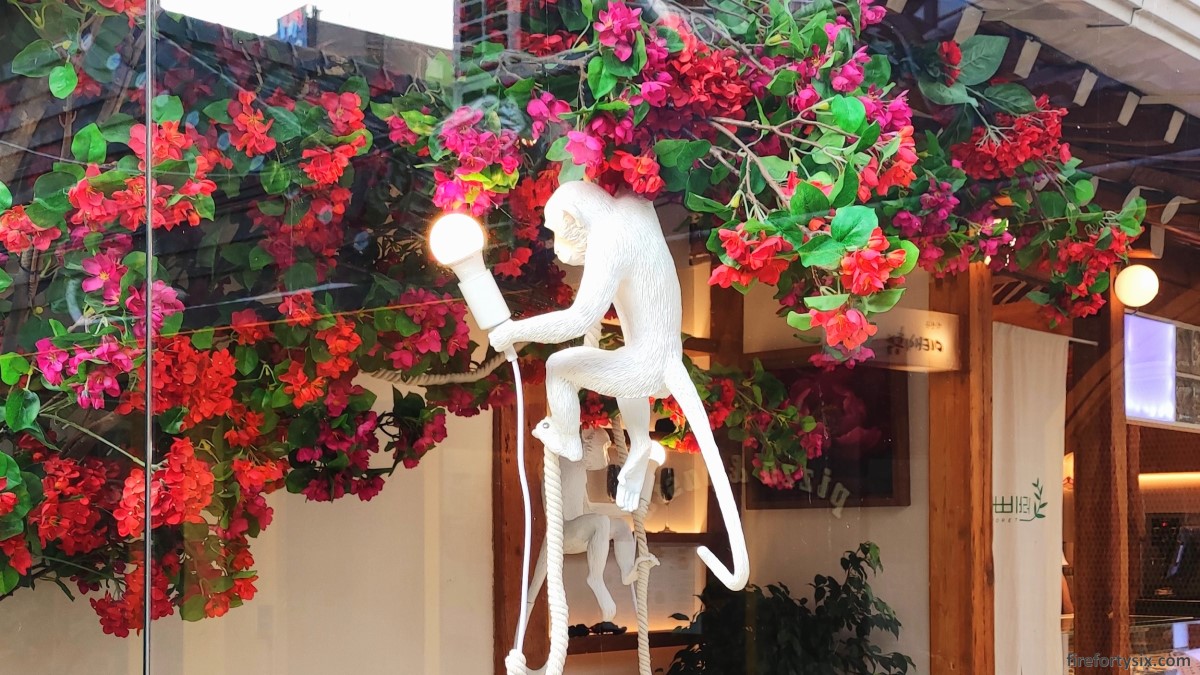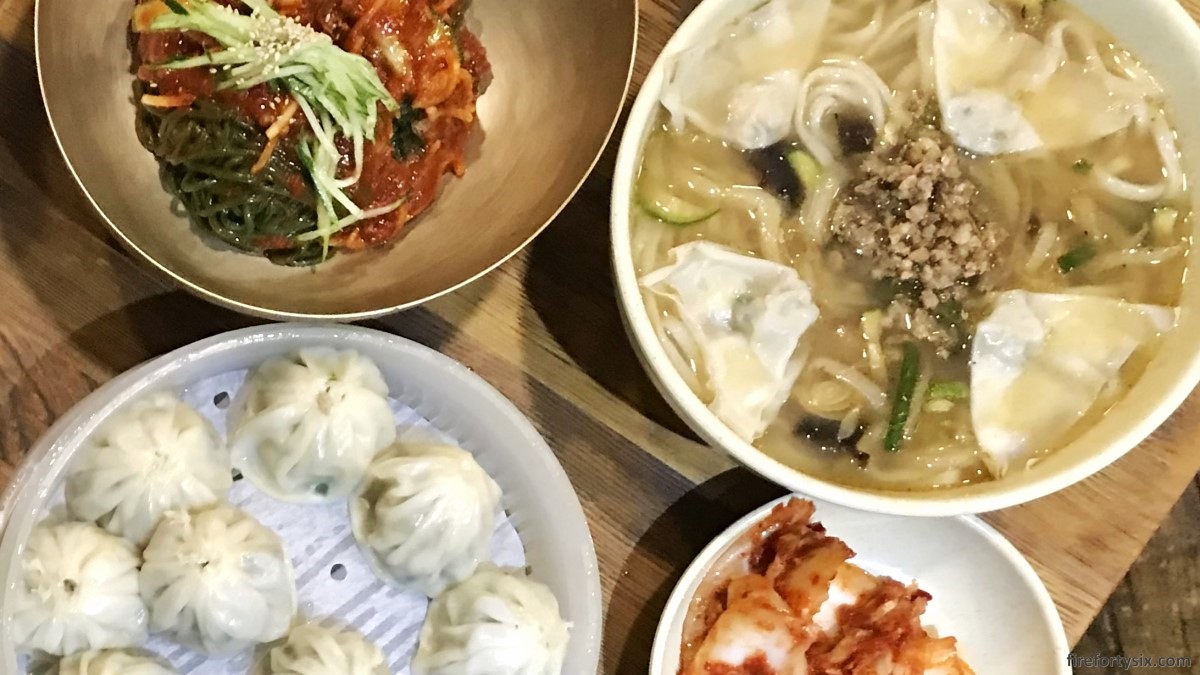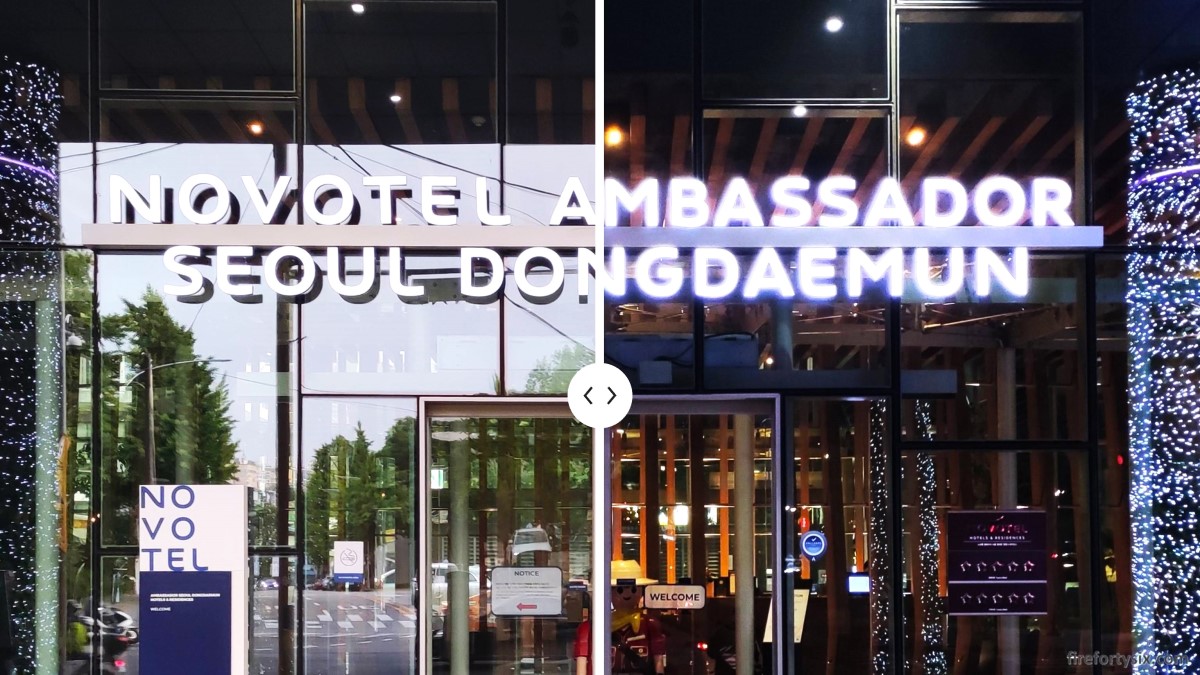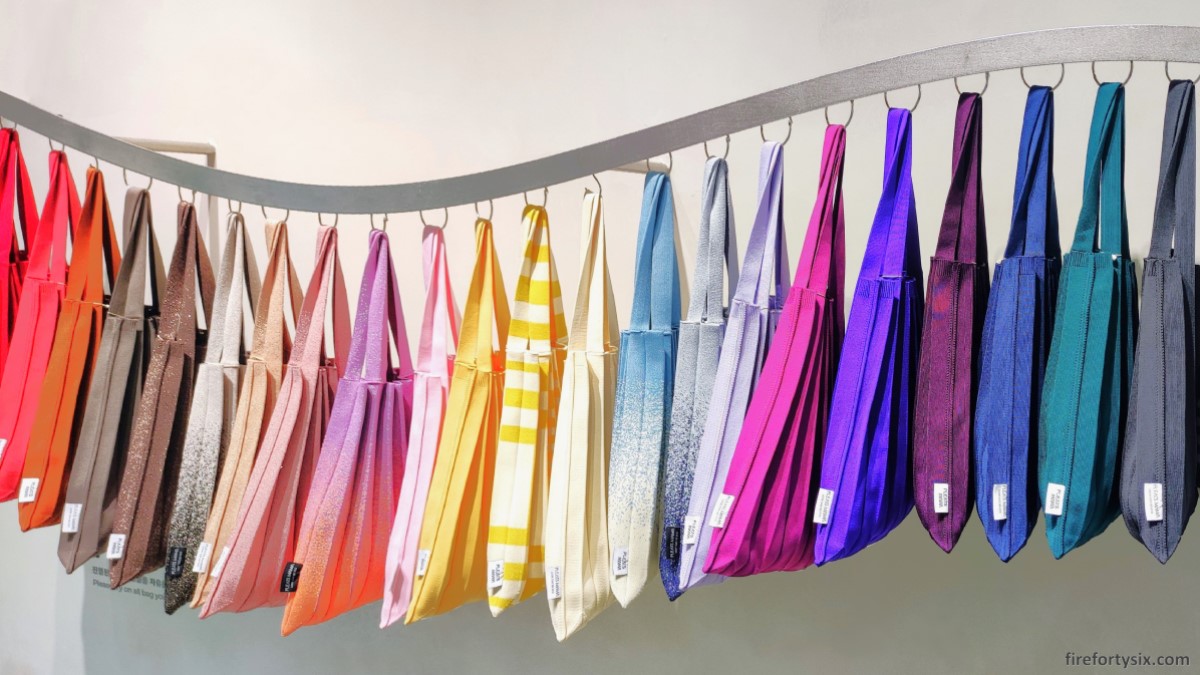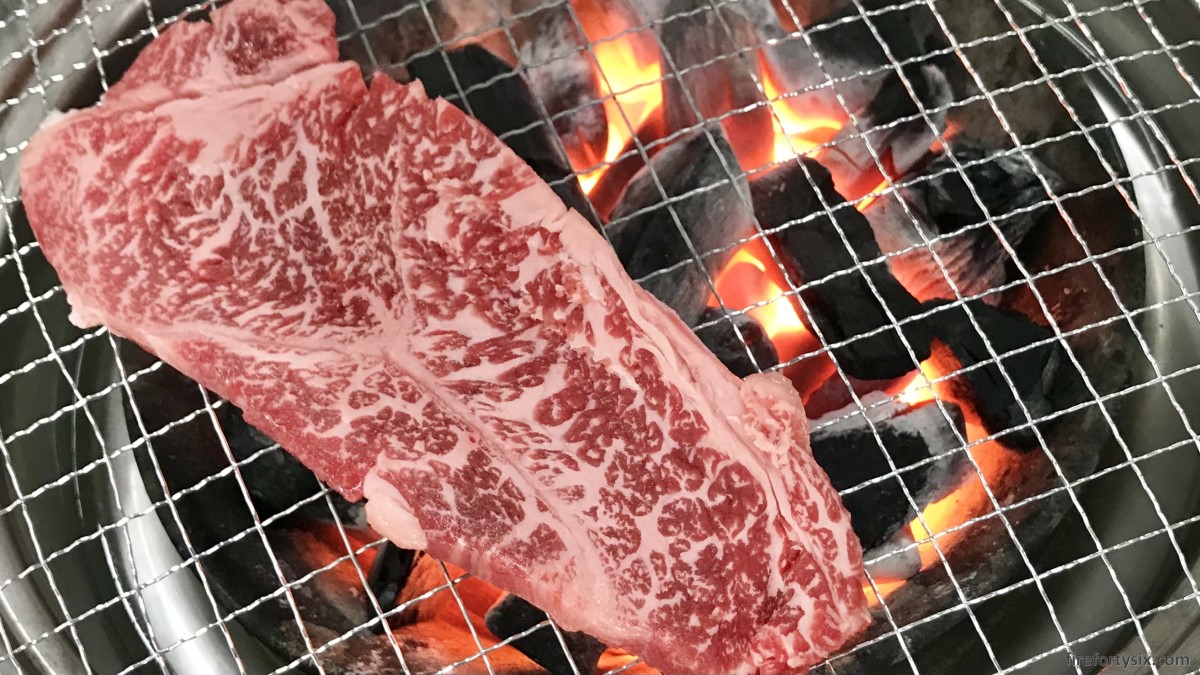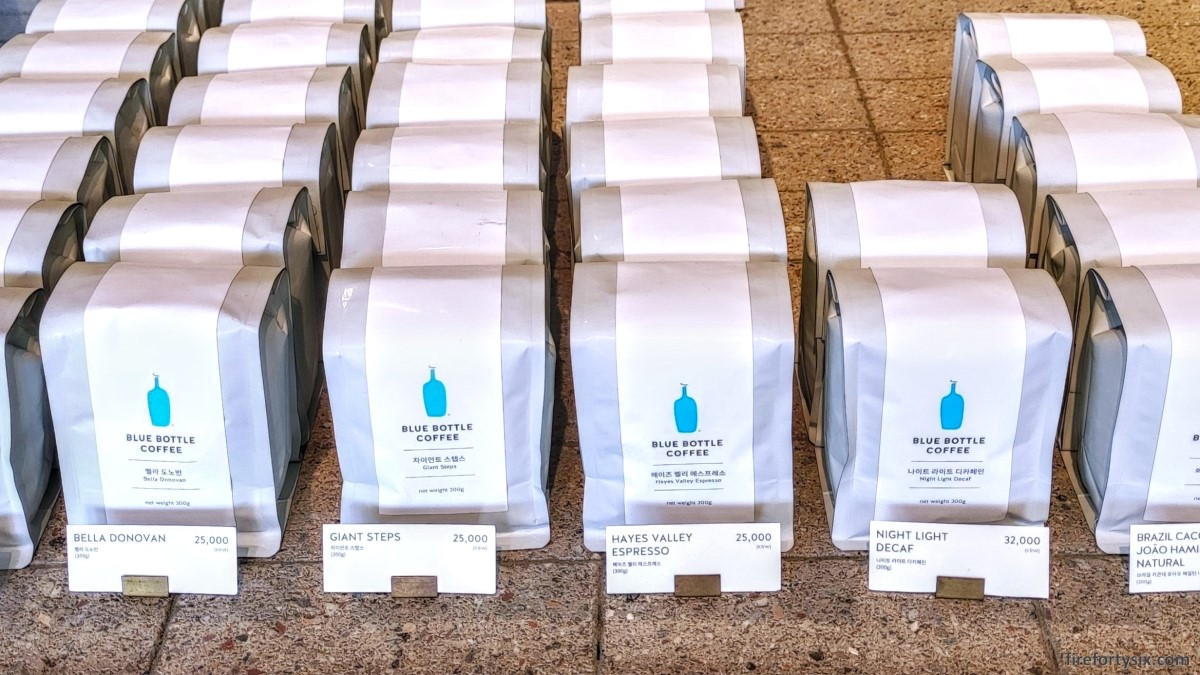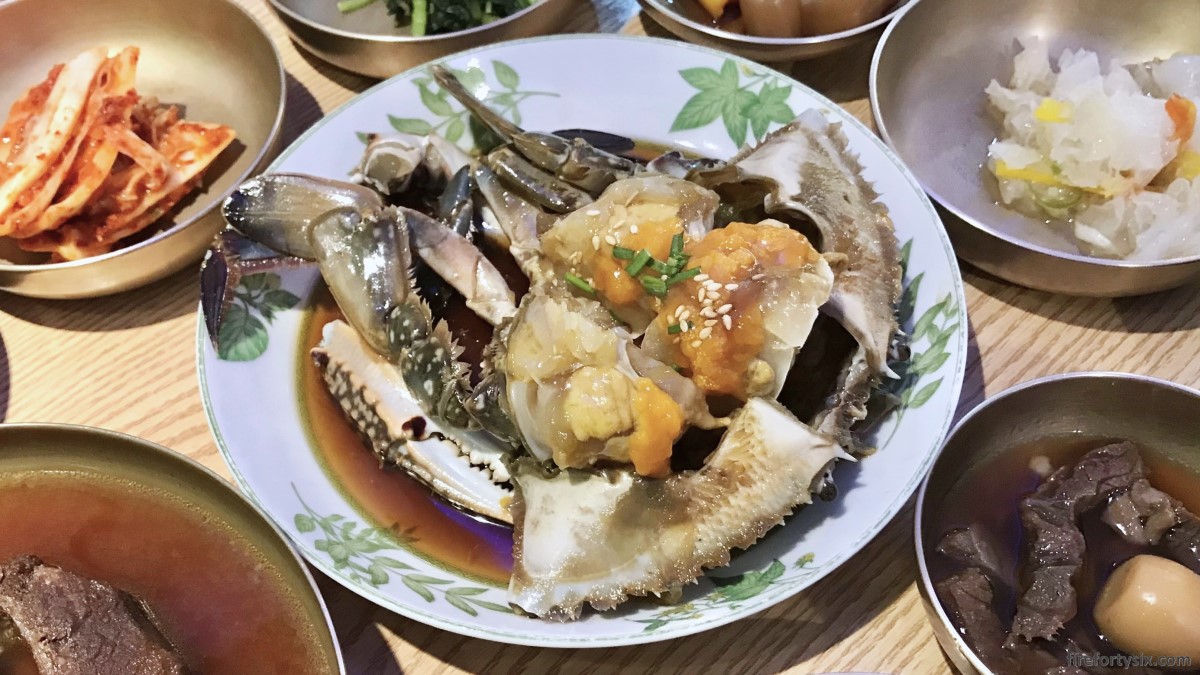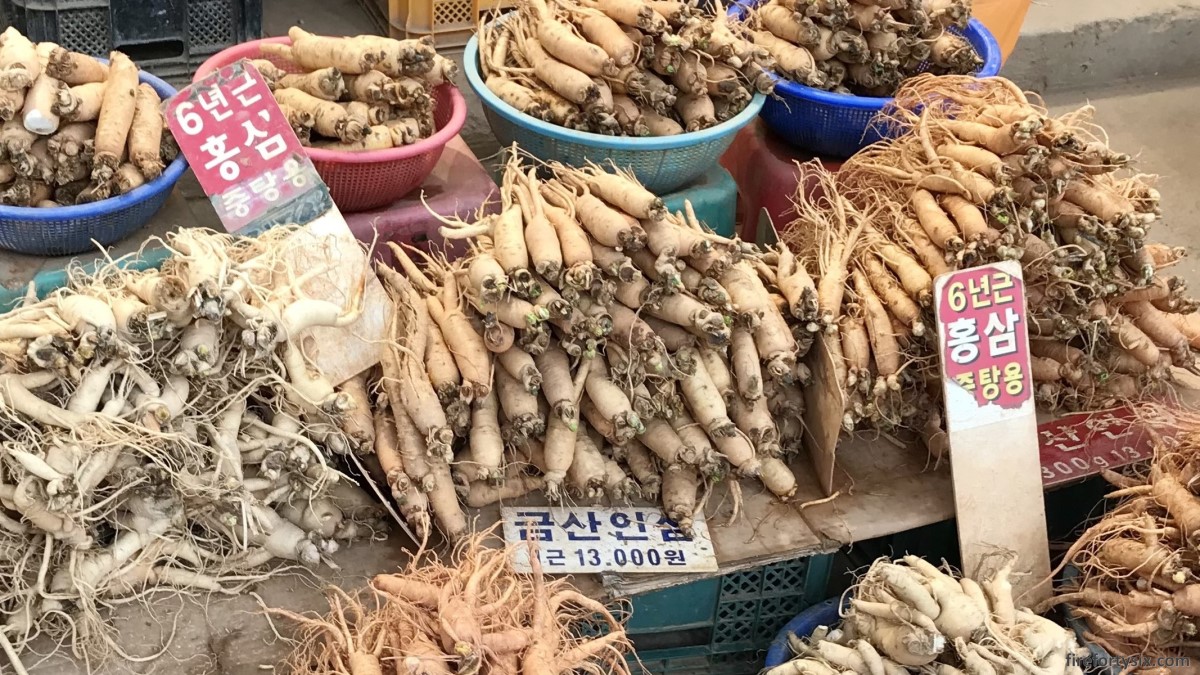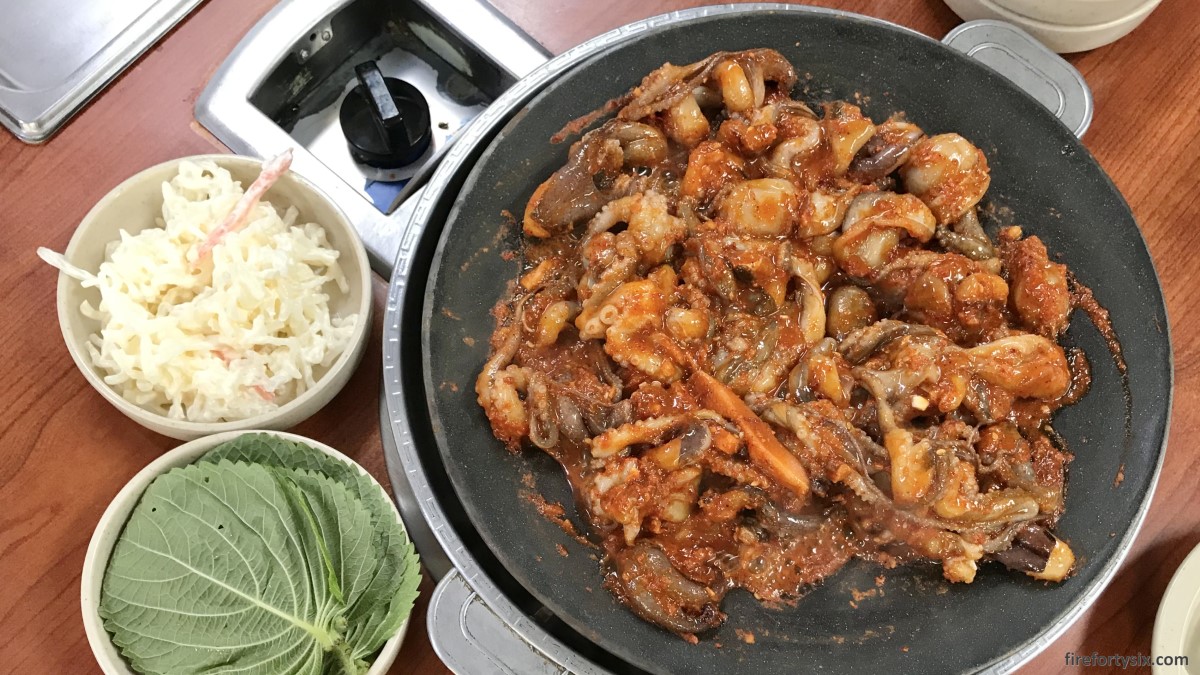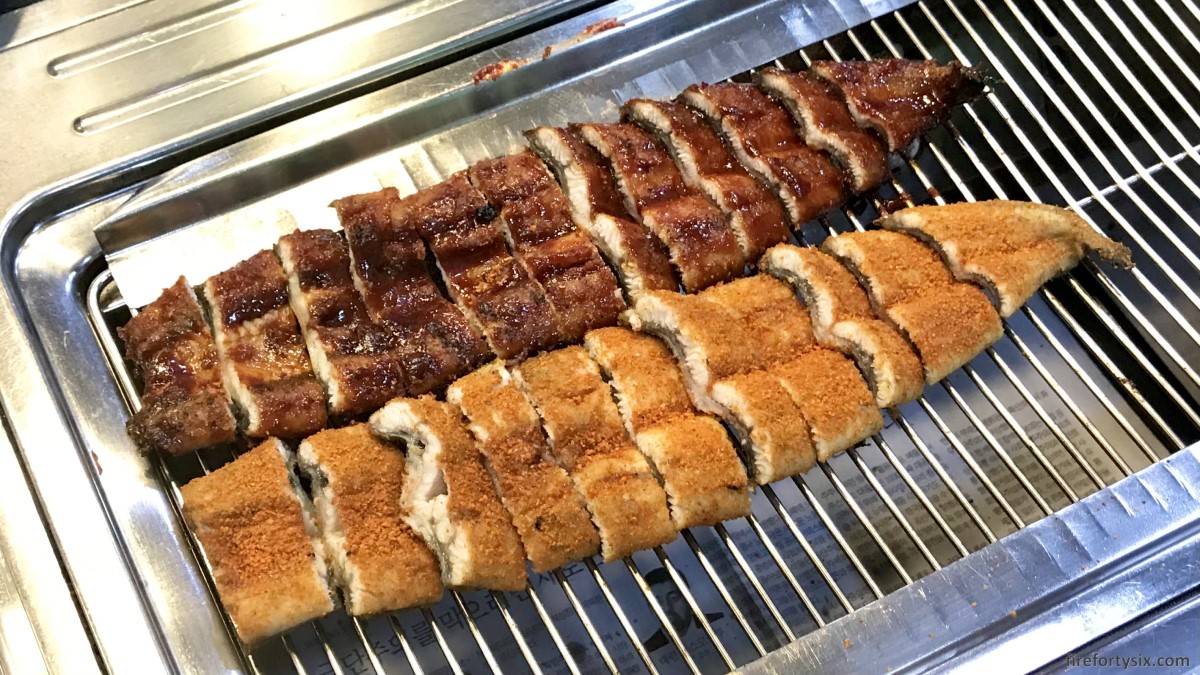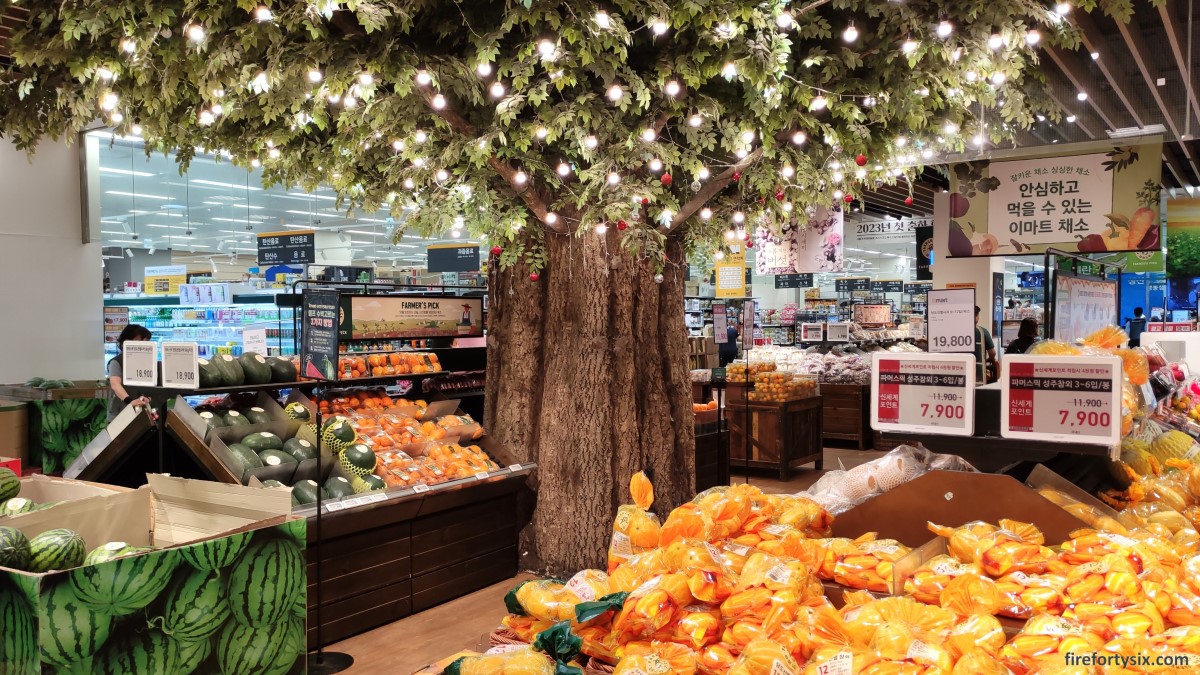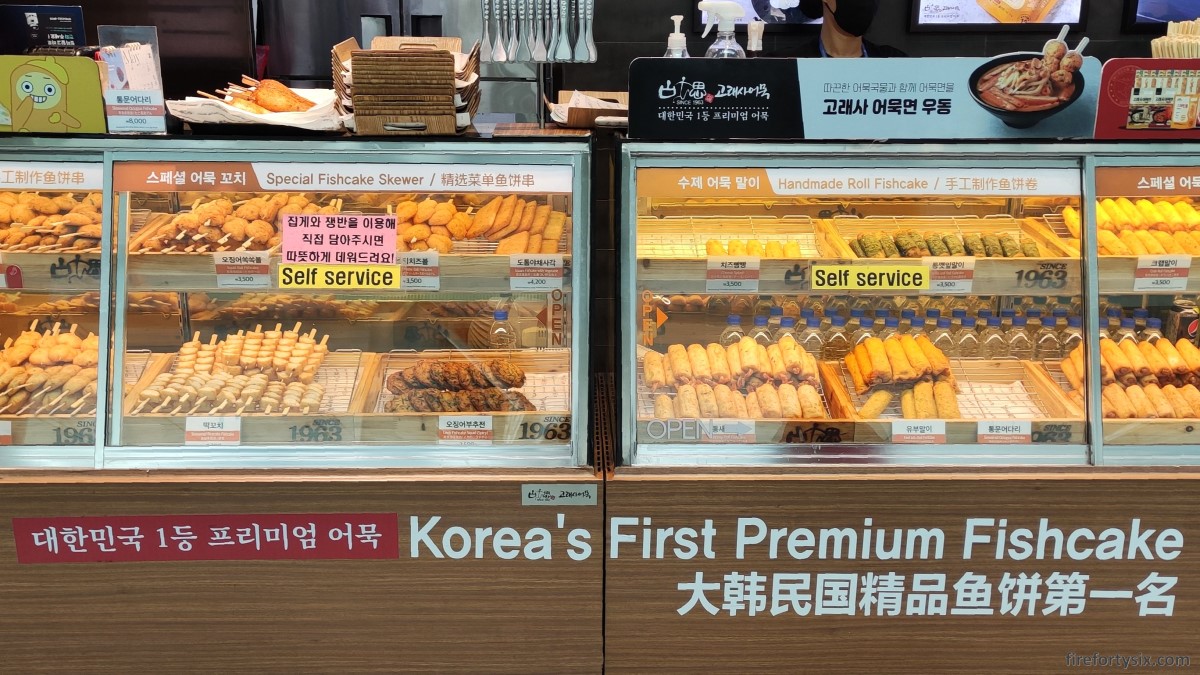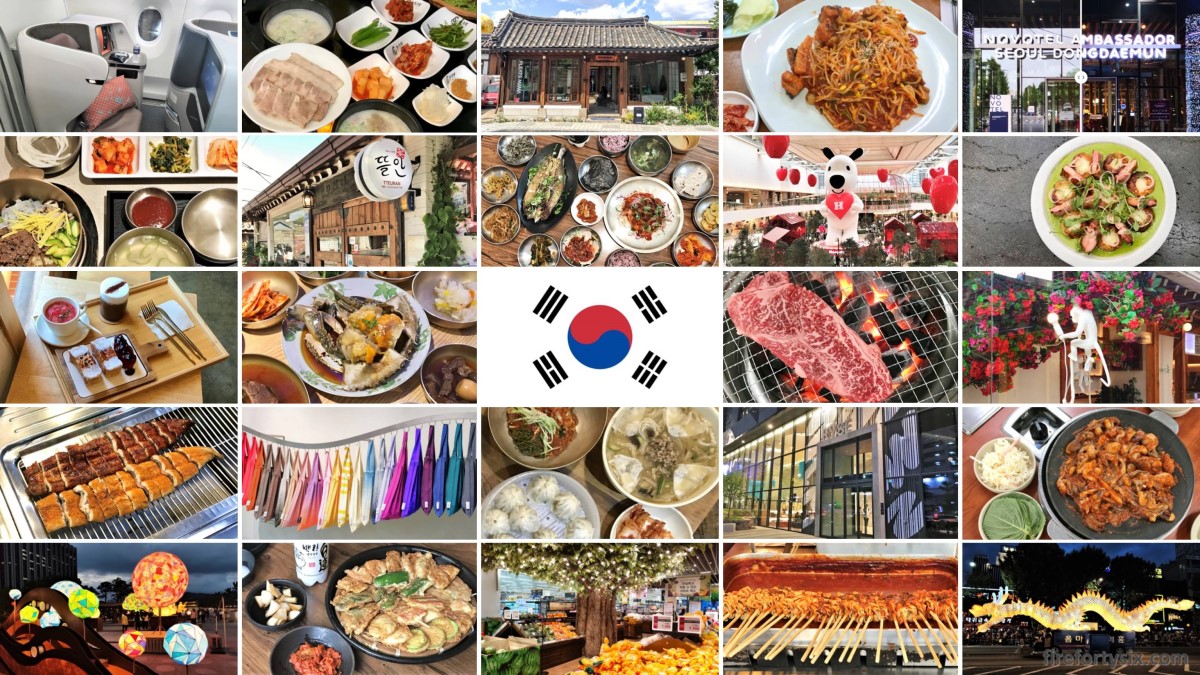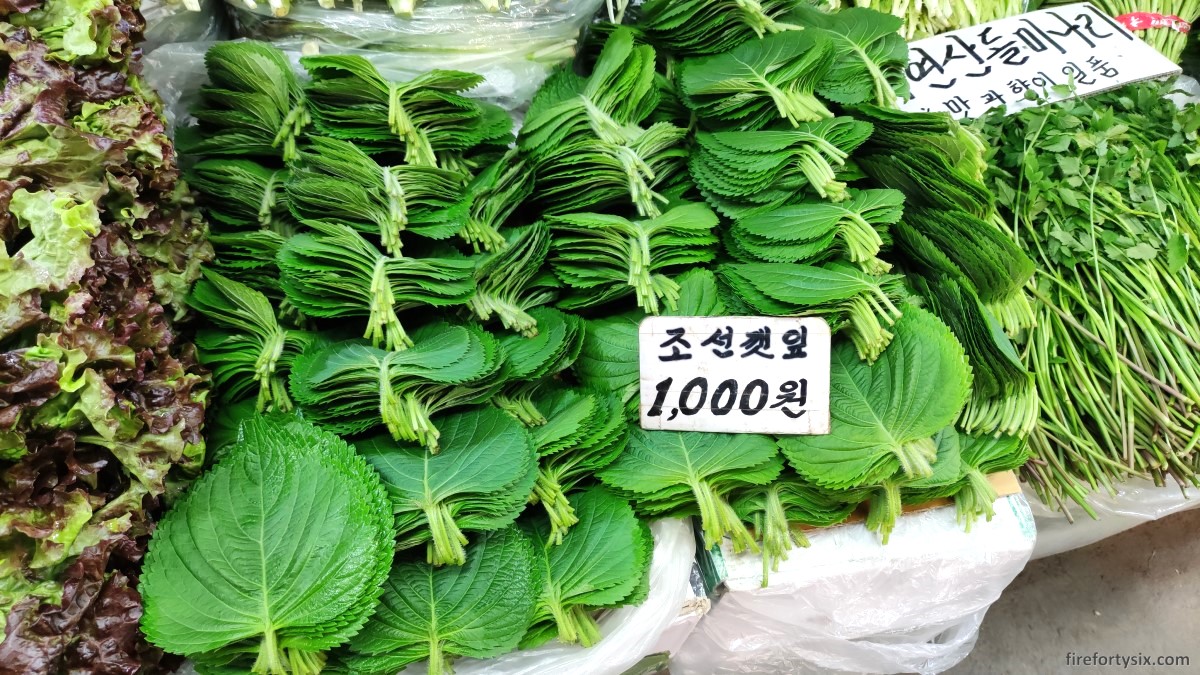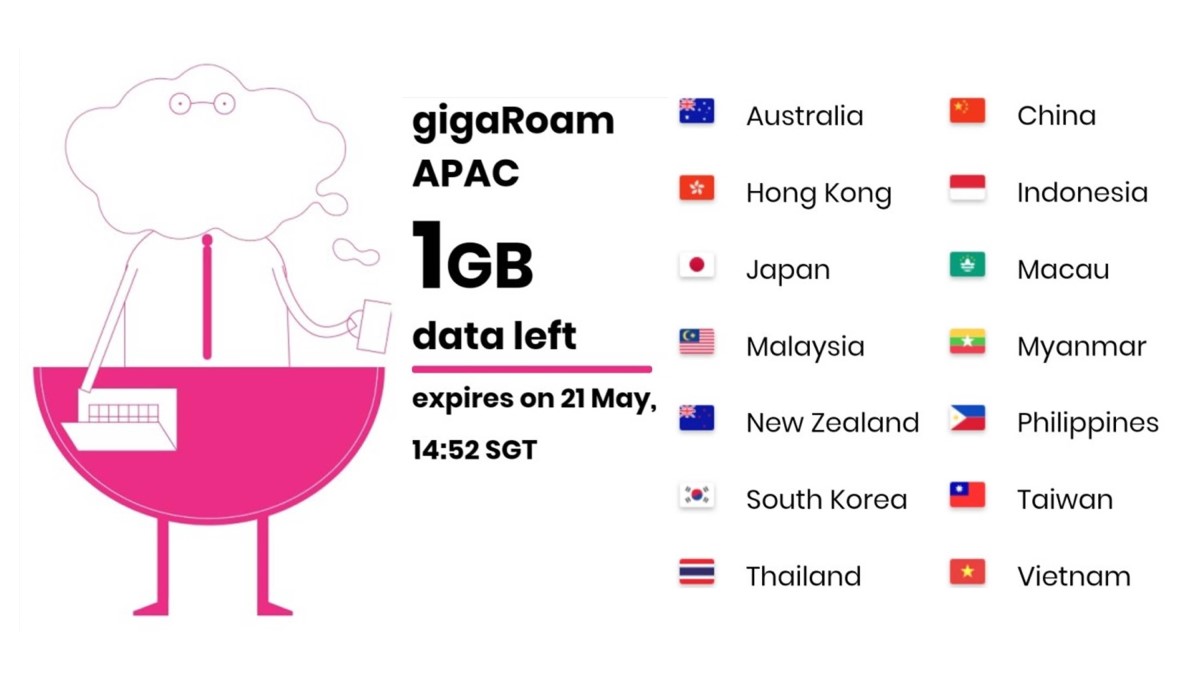One K-food that was on the top of our list during a recent trip to Seoul was hanjeongsik (한정식), or Korean table d’hôte.
It’s not named after any particular dish, but rather how an entire meal is served. Consisting of all the essentials — rice, soup, banchan and mains — everything, everywhere, all at once.
You could say that hanjeongsik adopts the culinary equivalent of the “shock and awe” military strategy.
No fancy course-by-course presentation like French fine dining or Japanese kaiseki. Where each dish is accompanied by lengthy descriptions of ingredients used, how it was cooked and, sometimes, even the chef’s life story.
Instead, its overriding objective is to see how much food can be crammed onto your table, in as little time as possible. It all sounds very overwhelming, but we knew that we had to experience it at least once.
Finding a restaurant proved to be more challenging than I thought. Not because locating one was difficult, but actually the opposite — there were just so many to choose from. Eventually, I decided to go with someone’s recommendation in a Korean travel Facebook group.
Hangaram (한가람)
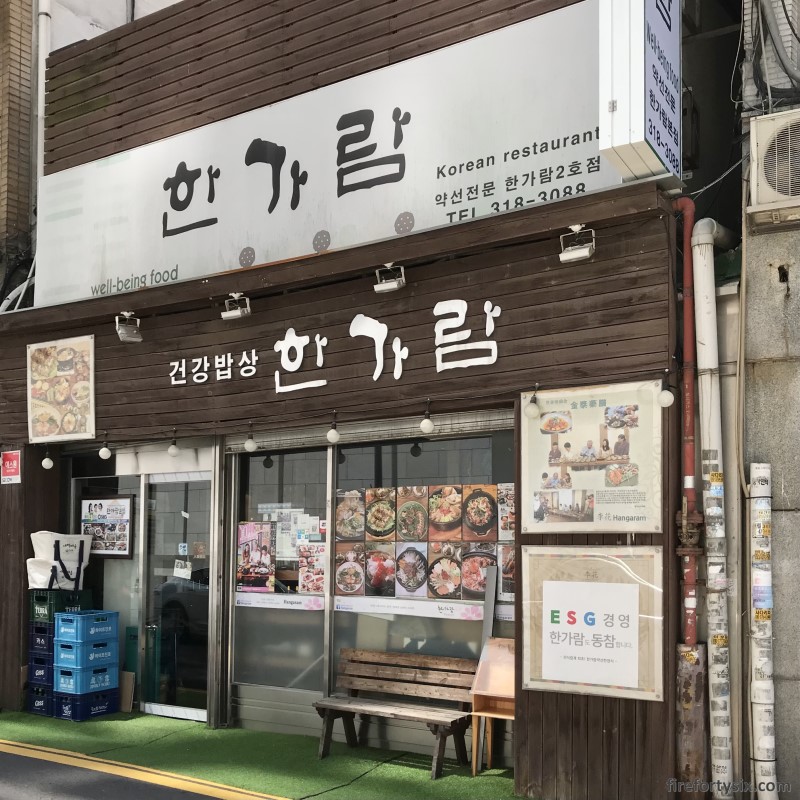
We found ourselves at Hangaram after a long and winding 340m trek from City Hall subway station (on Lines 1 & 2), cutting through Bukchangdong and hiking up a fairly steep slope.
If you’re using Naver Maps, it’s located here. Just follow the walking directions provided by the app and you’ll reach there in about 7 minutes.
If you’re using Google Maps instead, here’s the location. Good luck getting there though, because you won’t have walking directions. You might want to save yourself some grief and just download Naver Maps.
The forested theme, dominated by dark brown hues, carried over from the façade and into the dining room. Warm yellow lights hung from the ceiling, offering a contrast from the white fluorescent tubes common in many traditional eateries.
We arrived at the tail end of a weekday lunch rush, so most of the crowd had already left. There were still a couple of tables finishing up their meals, but it was relatively empty otherwise.
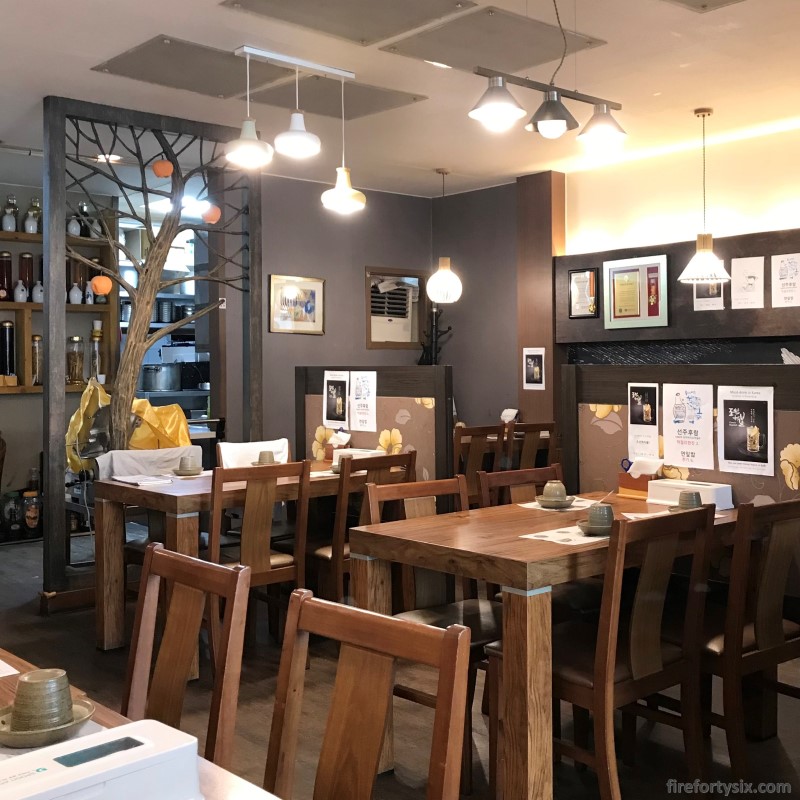
Menu
Before stepping into Hangaram, we had no idea that they specialised in food with medicinal benefits.
Our first hint was when we saw 藥膳 on the menu cover. It was written in hanja and therefore had the same meaning in traditional Chinese, which we could understand.
To reinforce the point, they also explained their culinary philosophy in handwritten English:
Food therapy is a practice in the belief of healing through the use of natural foods instead of medication
Nice.
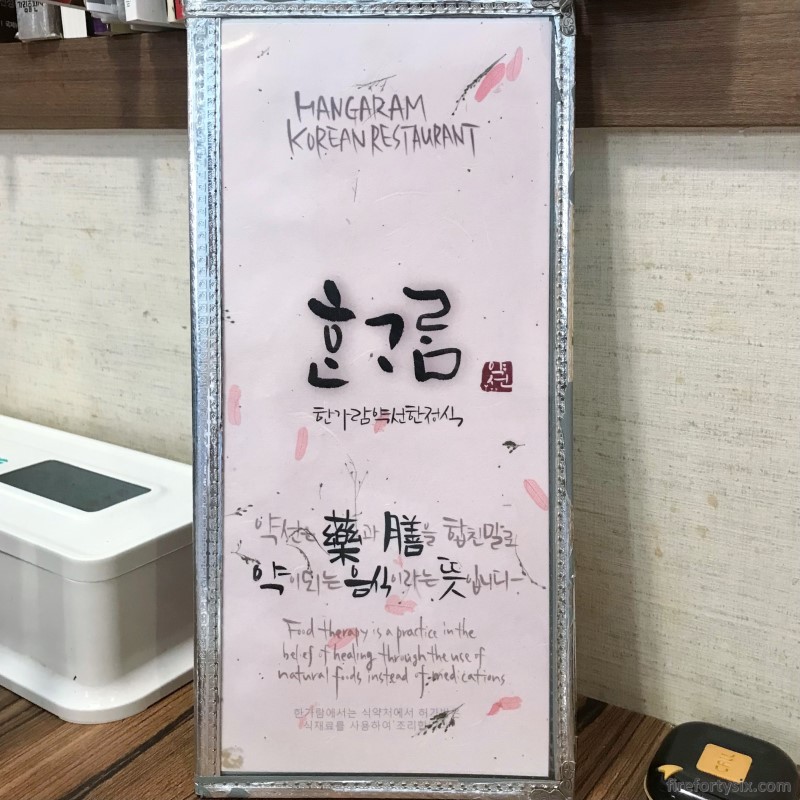

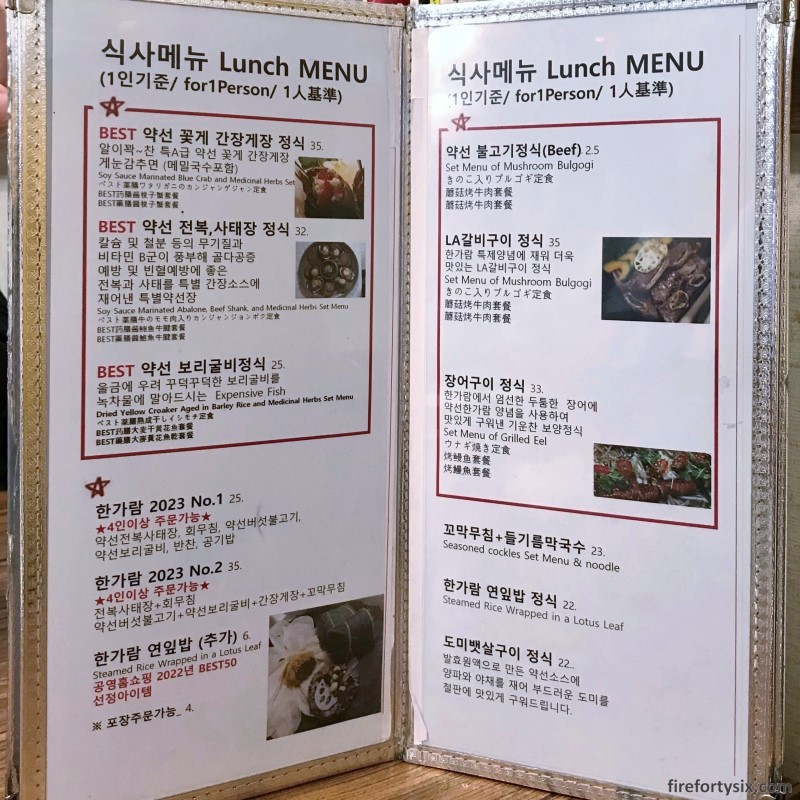
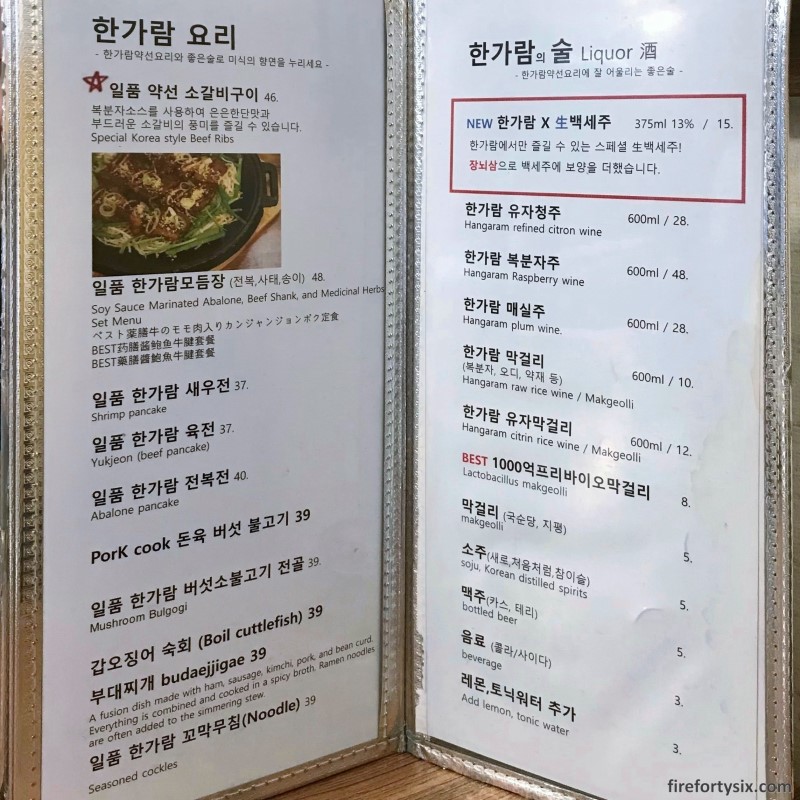
We were tempted to go with their signature Hangaram Meal (한가람 정식) that featured “seasonal items customised to suit your taste and constitution”, but we eventually ordered from their lunch menu instead.
There were only six choices, but it took us some time to decide. Between the marinated blue crab, marinated abalone & beef shank, dried yellow croaker, beef bulgogi, LA galbi and grilled eel, we picked the two cooked seafood options.
But first, makgeolli (막걸리)
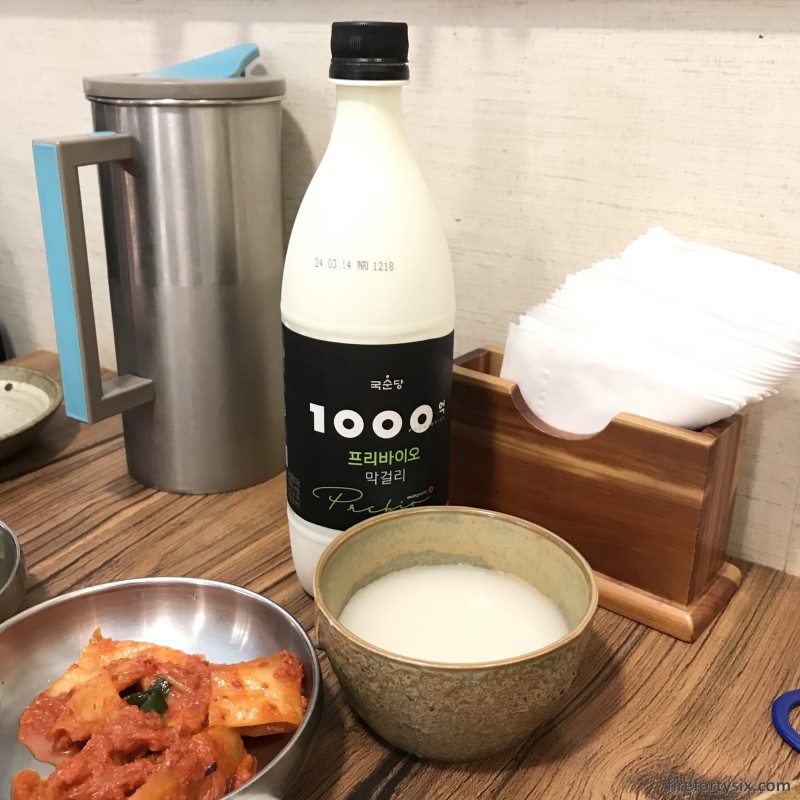
The KookSoonDang 100 Billion, containing more than 12x the Earth’s population in lactobacillus, was a great way to activate our gut microbiome and wake up our digestive system.
It was rich and creamy, with a hint of citrus and a playful touch of effervescence. Of the many bottles of makgeolli we had throughout our ten days in Seoul, this was among the best.
Even better was the fact that it was available for sale in Singapore. Needless to say, we started to run out of space in the vegetable compartment of our fridge again.
Hanjeongsik (한정식)
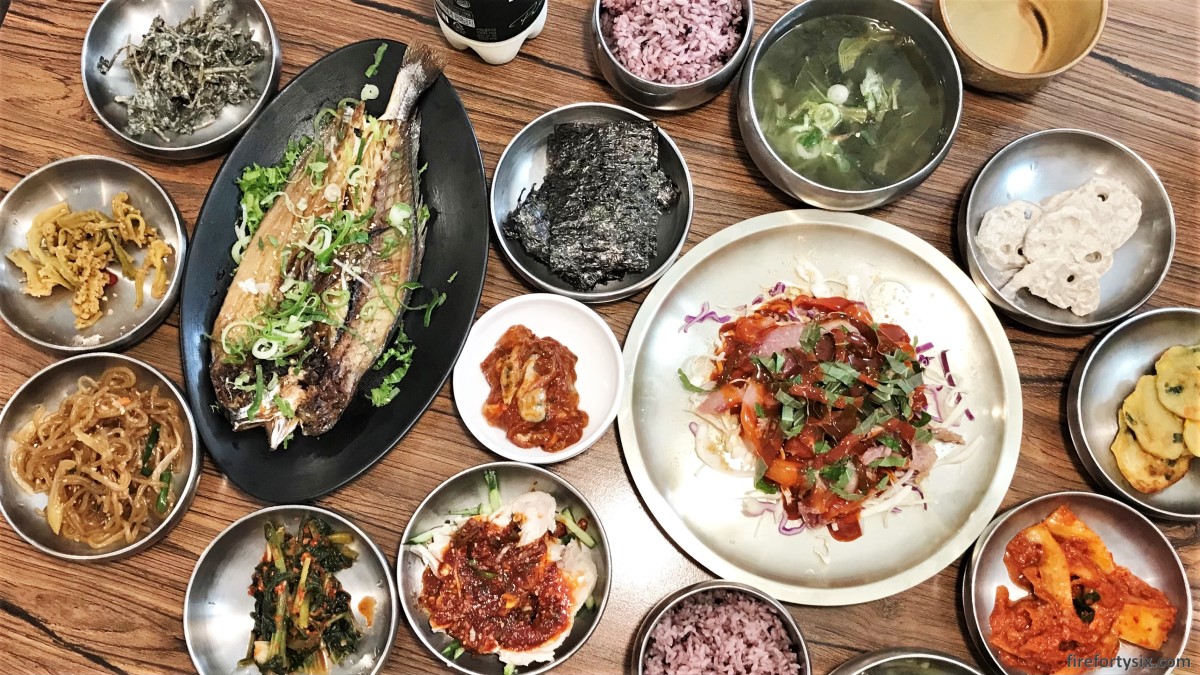
Despite being mentally prepared for the large number of incoming items, when the food started arriving, we were hopelessly overwhelmed by the non-stop cascade of dishes.
First came the large platters that contained our main dishes. Then, numerous small plates of banchan were arranged around them, like the many moons orbiting Jupiter. Finally, individual bowls of purple rice and seaweed soup for the both of us.
We wanted to help, but quickly realised that we would have been a hindrance to the ajumma unnie who must have done this hundreds, if not thousands, of times.
As each new item was placed on the table, existing ones were shuffled around to make space. The dance was fast and furious yet, in a strange sort of way, quite mesmerising. It was truly a sight to behold.
When the dust finally settled, practically every available inch of our table was covered. And before we could fully appreciate the sheer volume and variety of food delivered, unnie was gone. Just like Keyser Söze.
Banchan (반찬)
One of the reasons why we find Korean food so appealing is because of the concept of banchan.
Every time you sit down for a meal, you not only get to eat what you ordered, you also get a bunch of extra side dishes at no extra charge. The more fancy the restaurant, the more banchan is served.
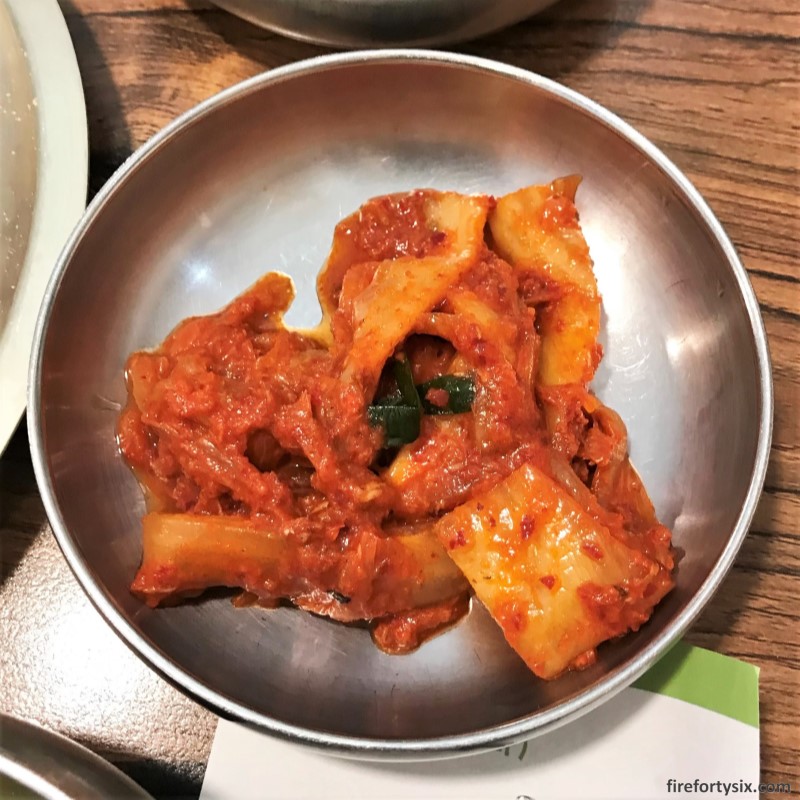
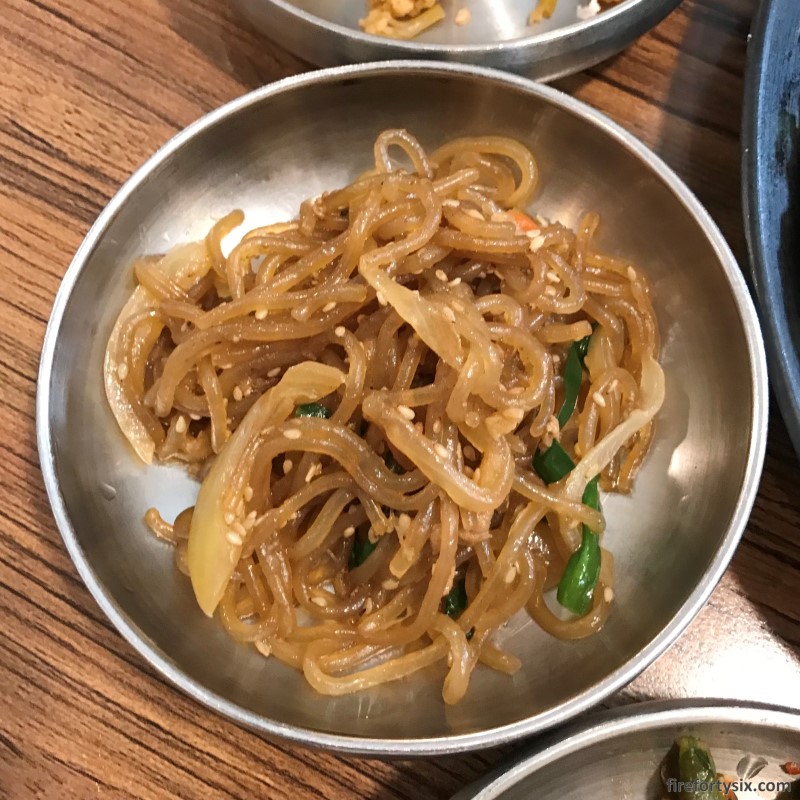
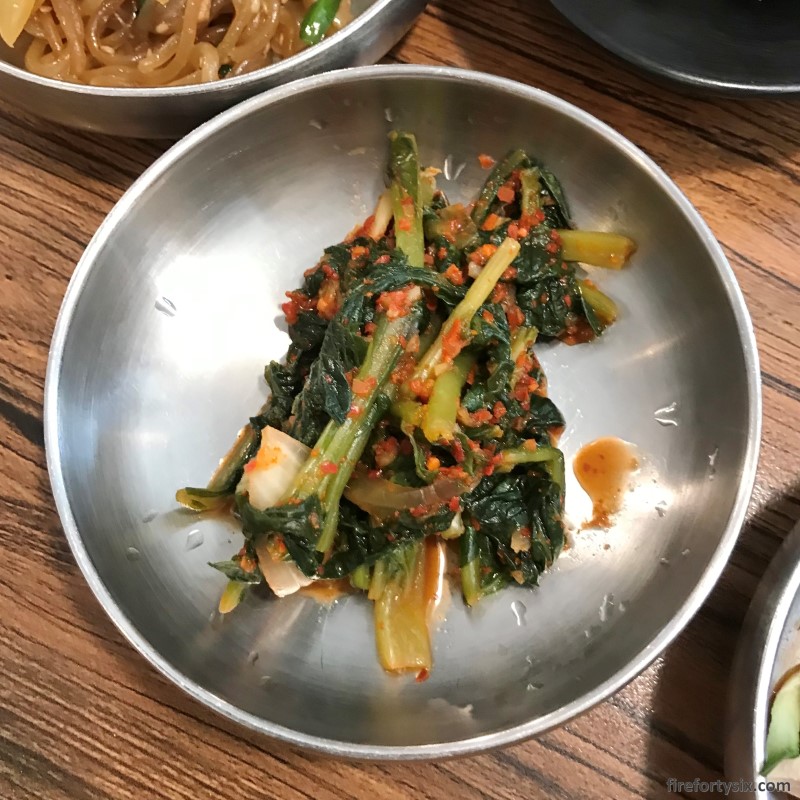
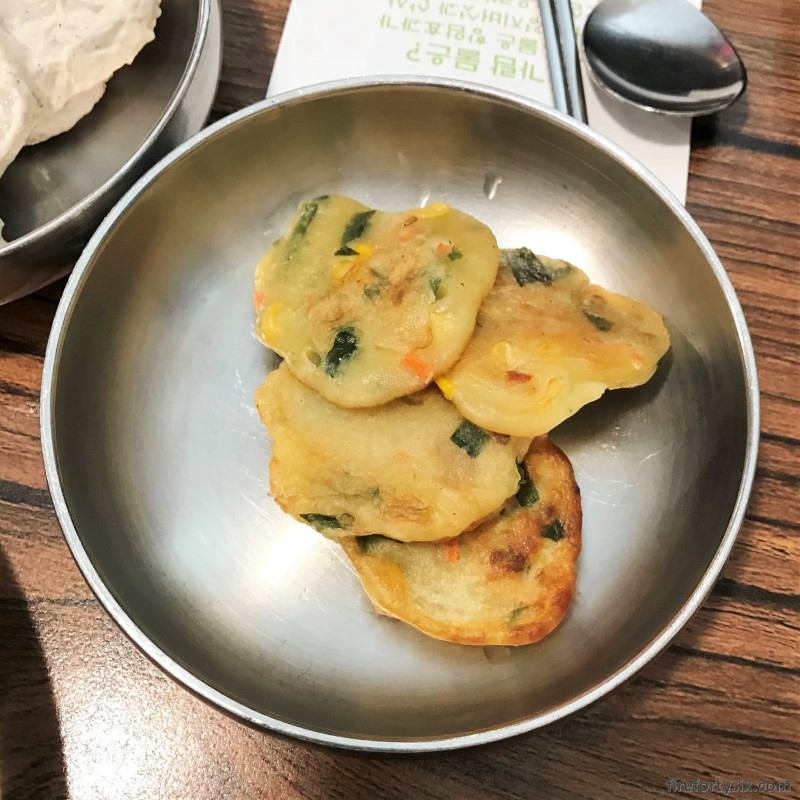
Kimchi is always a given. Some might even say that it’s not technically banchan, but a compulsory staple. Then there are others like japchae, geotjeori and jeon, with slight variations across eateries.
The banchan at Hangaram included all the above, and much more.
Marinated raw oysters, gosari namul, lotus root in perilla seed dressing and even a spicy boiled chicken item that tasted like Sichuan saliva chicken (口水鸡), except without the tongue-numbing peppercorns.
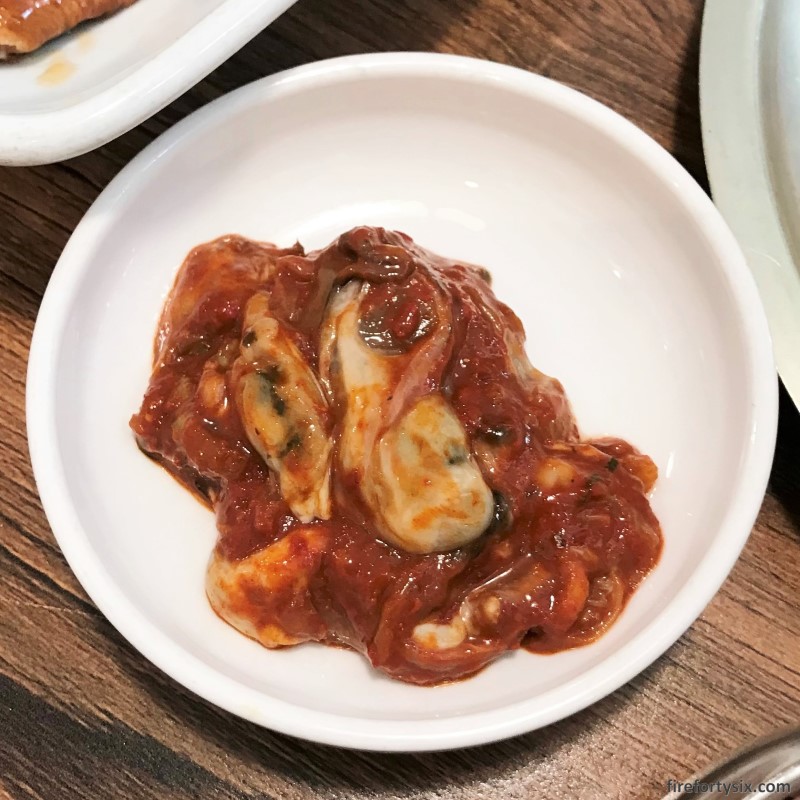
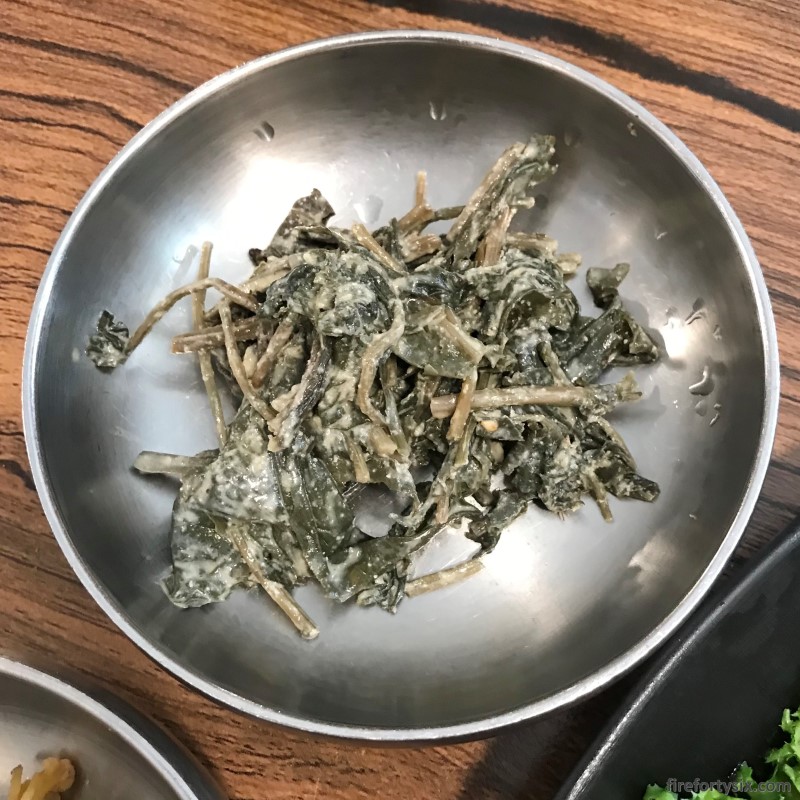
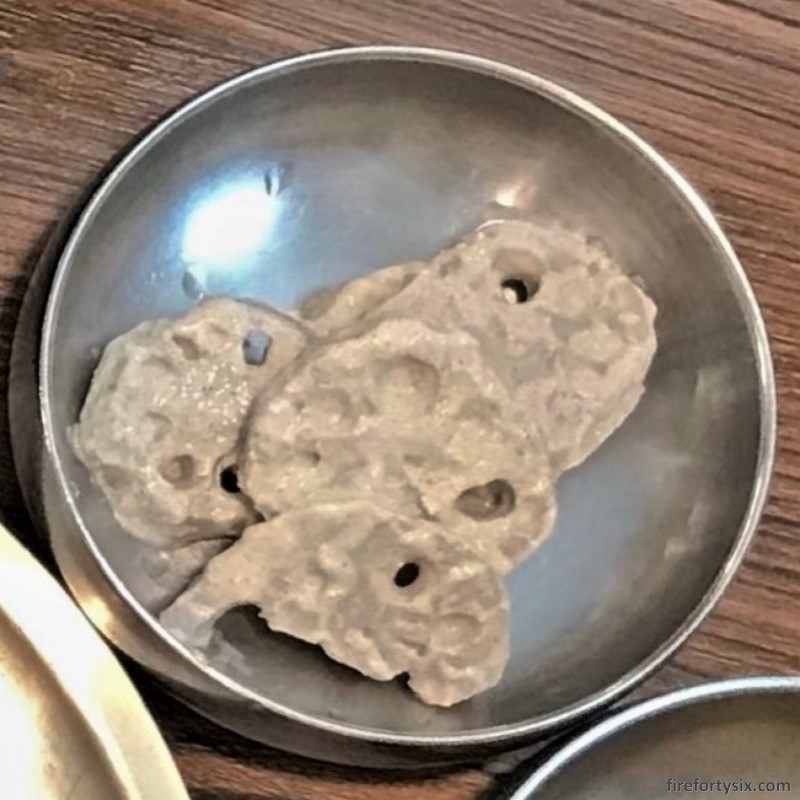
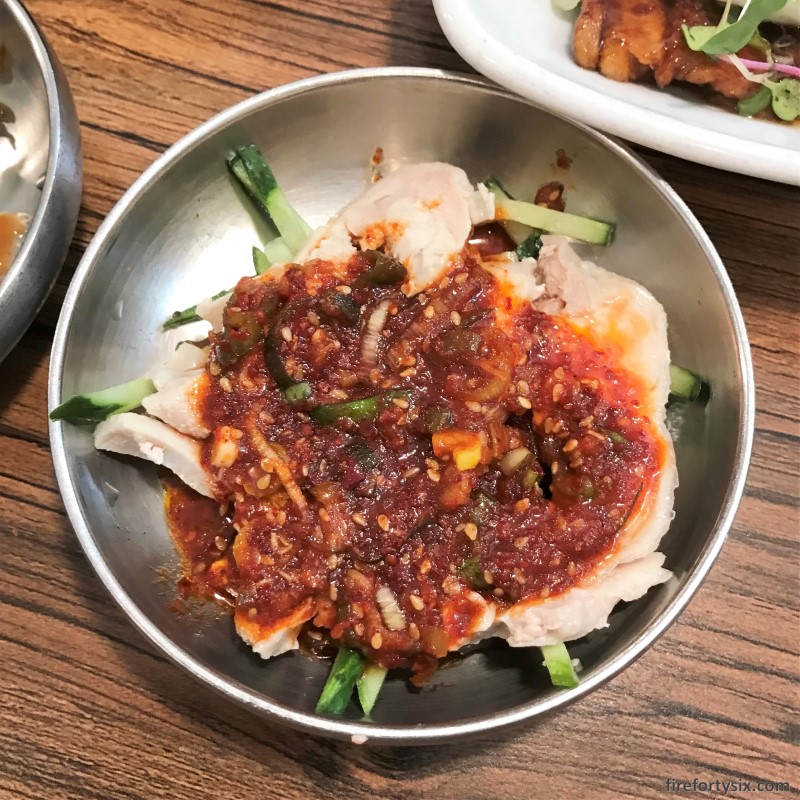
All the items were good, but the oysters really stole the show. I’m always a bit wary about eating raw oysters overseas, so I tried the first piece with some trepidation.
It turned out that I had nothing to worry about whatsoever. That juicy little morsel was as fresh as a sea breeze, and as briny as the ocean.
The spicy and sour chojang marinade highlighted the innate umaminess of that delightful nugget of seafood. As delicious as it was on its own, eating it with rice, seaweed and a sliver of kkaennip made it even tastier.
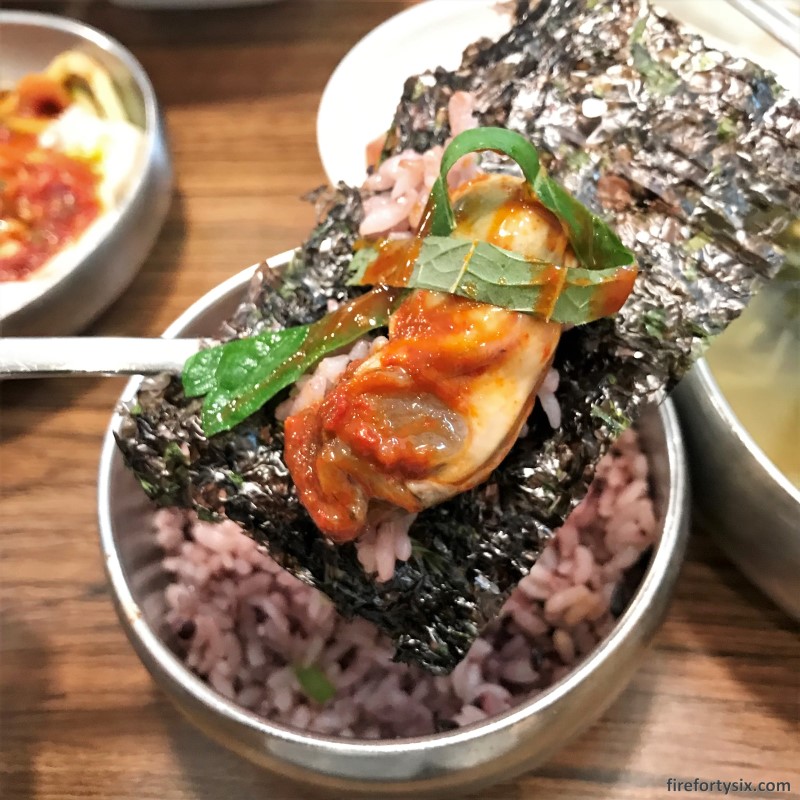
We were tempted to ask for refills, but realised that we were going to have difficulty finishing everything that was already served. Especially since we hadn’t even started on our main dishes yet.
Seobiseu (서비스)
There was a large platter of hwe, or sliced raw fish, on our table. Problem was, we didn’t recall ordering it, and the portion was way too generous for it to be part of the banchan.
One of the staff must have noticed our concern and confusion, because she came by our table and, with a big smile, proclaimed: “Seobiseu!”
Which literally translates to “service”, but when you hear it in a Korean restaurant, it effectively means: “Woohoo! Free food!”
I was as confused as I was surprised, and subconsciously blurted out: “Jinjja?!”
This elicited amused laughter from all the staff within earshot. I guess it must have been quite entertaining to hear those words coming out from the mouth of an obviously foreign tourist.
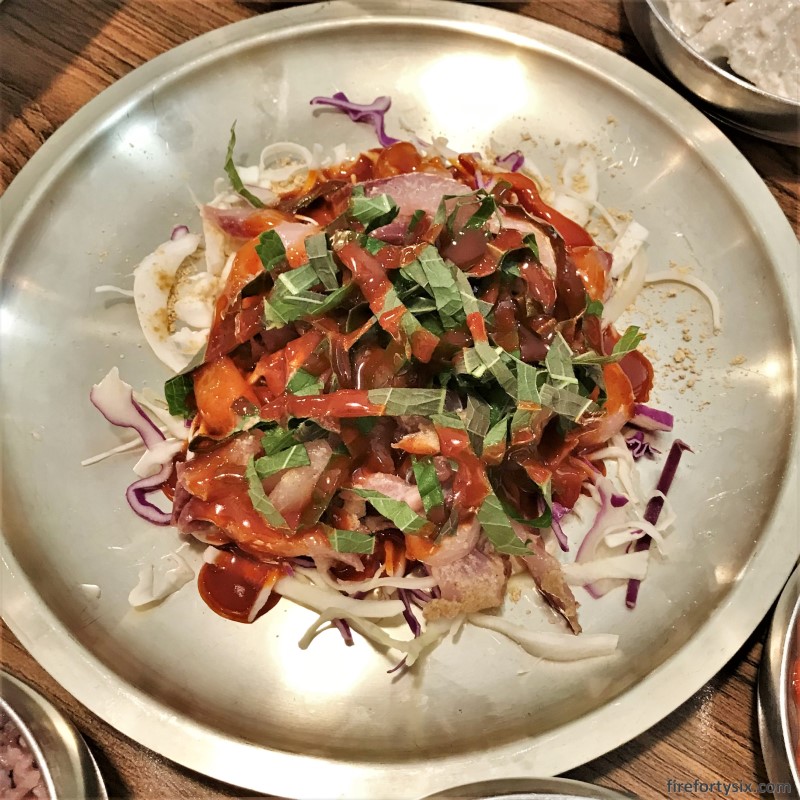
Their generosity was much appreciated, and we made sure to demonstrate our gratitude by wiping the entire plate clean. Of course, it didn’t hurt that the hwe was truly outstanding.
Thin and flavourful slices of raw white fish were mixed in with crunchy cabbage, onion, kkaennip and topped with lashings of chojang. I generally prefer my sashimi unadorned, but this was something I’d eat again in a heartbeat.
But in order to order it next time, I would need to know what fish it was. Papago’s conversation mode to the rescue, yet again. Unnie helpfully told us that it was “Boli Sung-eo (보리숭어)”, or barley mullet.


Mains
I wasn’t as enamoured with the dried yellow croaker, but The Wife found it to be right up her alley. The drying process intensified the natural flavours of the fish, and gave it a flaky but chewy texture. Since she was a fan, I left it to her to finish the rest of the fish.
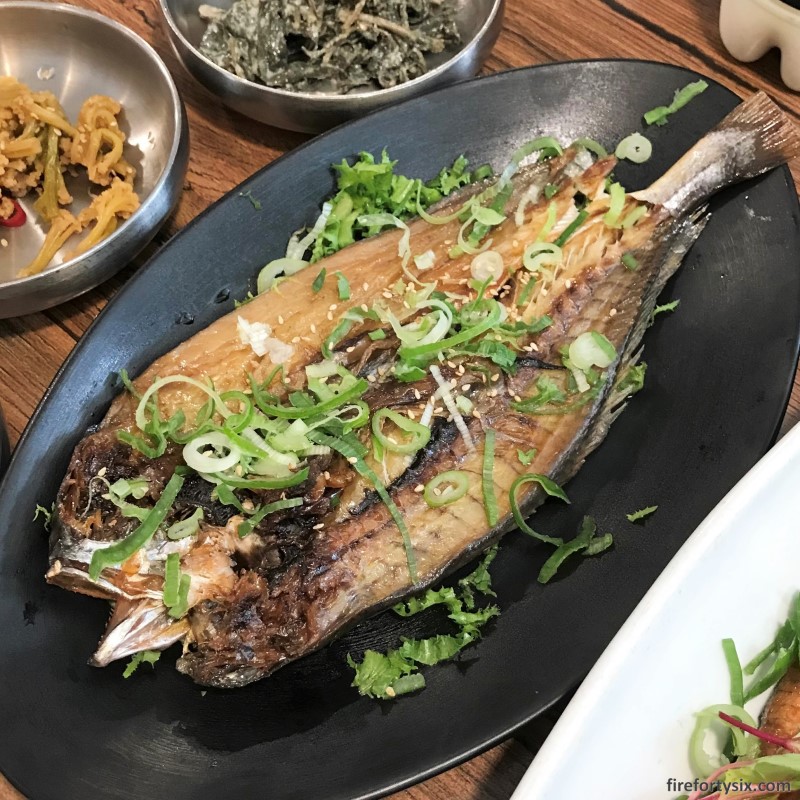
The eel, though, was a totally different matter. A thick slab of filleted eel was coated with a sweet soy sauce and grilled to impart a smoky char to the surface, while keeping the insides most and juicy.
Unlike Japanese unagi kabayaki, this was garnished generously with slivers of young ginger and various microgreens.
First, I tried a piece as-is and found its flavour similar to the Japanese version, but significantly less sweet. Then, I ate another piece with all the toppings. Its character was totally transformed, with an added vegetal dimension that worked surprisingly well.
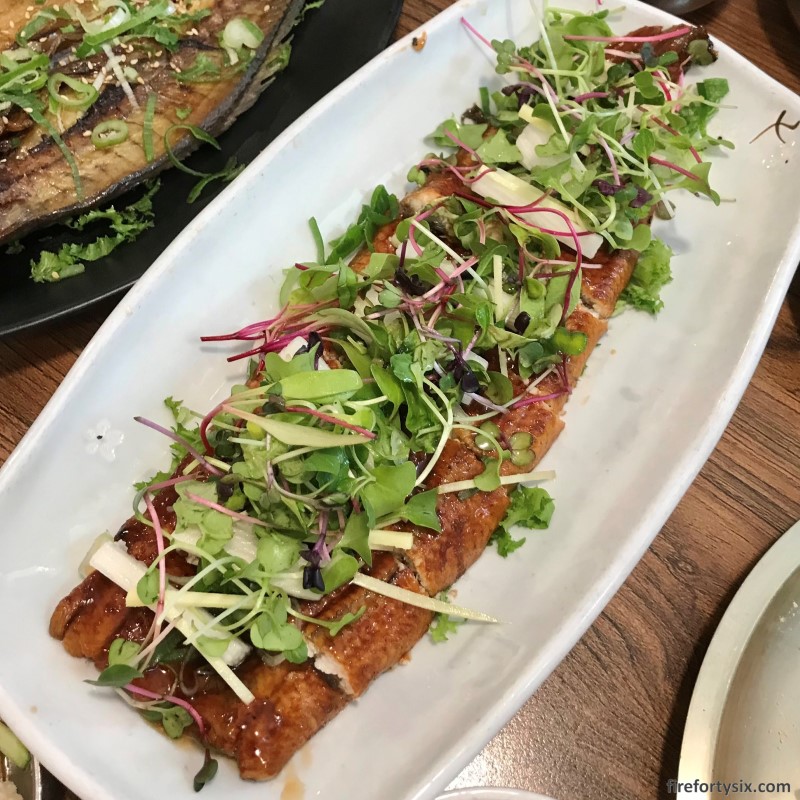
Now, I’m a huge fan of Japanese unagi kabayaki, especially those at Hitsumabushi Bincho in Ginza 2-chome, Tokyo. I’ve eaten there more than a dozen times over twice as many trips to Japan.
Even though I would place Hangaram’s grilled eel in second place, I have to admit that it comes really close. Maybe after I’ve had it a few more times, I might change my mind.
I think The Wife had the same thoughts as well. Because I had to physically move the plate away from her, to prevent her from snatching more than her fair share.
Endgame
We were determined to finish every single piece of every single dish on every single plate. But unfortunately, we were constrained by our limited stomach capacities and had to abandon part of our rice, half of the corn-flavoured jeon and a few pieces of lotus root.
All-in-all, I believe that we managed to clear out more than 90% of the food served. It was quite an accomplishment and I was quite proud of ourselves.
The “seobiseu” unnie from earlier also seemed to agree. When she came by to serve us a sweetened pumpkin digestif, she saw our almost empty plates, nodded her head and looked genuinely impressed.
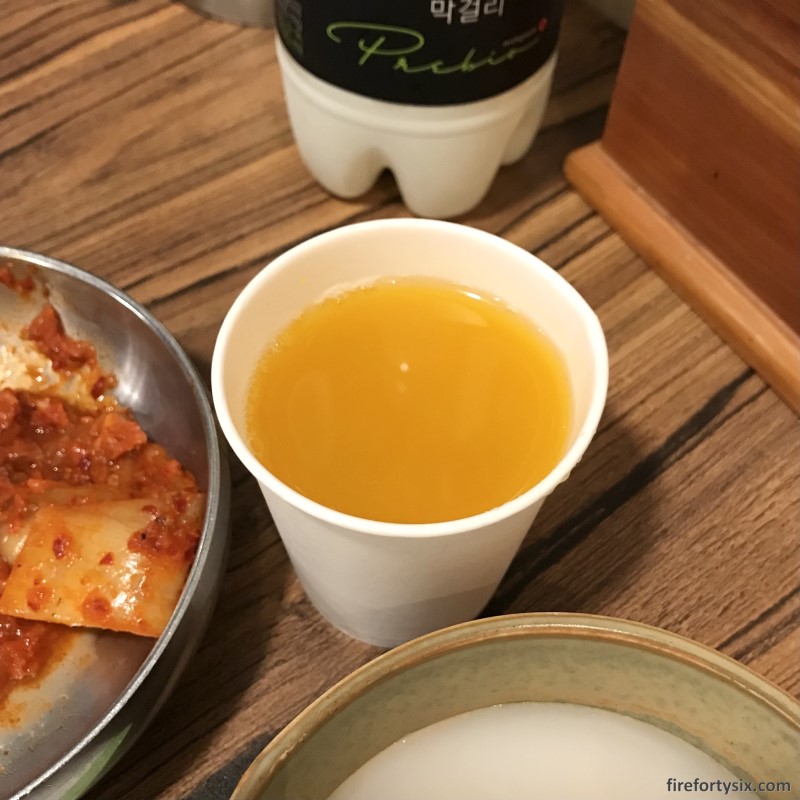
Papago had previously taught me how to say “thank you for the meal” in Korean, and this was a chance to test out my newly-acquired language abilities. She responded with a hearty “gamsahabnida” and that same bright smile.


The wonderful hanjeongsik that we had at Hangaram that day was, by far, the best meal we’ve had in Seoul. And that includes the ones we had at renowned Korean fine dining establishments like La Yeon and Jungsik.
In addition to the quality of the food, what was also quite amazing was the cost of the entire meal. We only had to pay ₩66,000, or around S$66, which is tremendous value-for-money.
It goes to show that you don’t have to spend a fortune to enjoy great food. All you need is a sense of adventure, and perhaps a bit of luck.
From now on, every time we find ourselves back in Seoul, we know we’re definitely going to have a meal at Hangaram. Perhaps even twice.

